Sidebar
Nuclear Energy

Almost precisely 11 months ago, I started this Lemmy community as a way for people on nuclear reddit to find a new home. That didn't exactly turnout the way I thought. But despite that, today we're the biggest nuclear energy Lemmy community around! I hope with this milestone we can build a more vibrant community with more people starting discussions and commenting more. Please share far and wide. I'll keep posting daily updates. If you like to support what I do, please consider [a donation](https://www.collectifission.nl/en/donations/). If you'd like to support the community host, [buy him a coffee](https://buymeacoffee.com/tedvdb)! On we go! ⚛️
Might be cool to setup a post on other nuclear communities, websites and accounts. Please share your links! I'll update this post ☺️ Reddit: - https://www.reddit.com/r/NuclearPower/ - https://www.reddit.com/r/nuclear/ - https://www.reddit.com/r/fusion/ Discord: - Socialists for nuclear energy: https://discord.com/invite/xSCEZxr - Go nuclear now: https://discord.gg/3mgzWKyB3e - Nuclear science and engineering: https://discord.gg/dPDWyuGJgP Mastodon: - https://greennuclear.online/ Websites: - https://collectifission.nl - leftwingers for nuclear - https://replanet.ngo - an international network of ecomodernists - https://de.nucleopedia.org/ - German language nuclear wiki
Apparently no nuclear energy community existed just yet, so let this be the first 🙂 Some initial rules: 1. Follow the rules of this instance: - No bigotry - including racism, sexism, ableism, homophobia, transphobia, or xenophobia. - Be respectful, especially when disagreeing. Everyone should feel welcome here. - No porn. - No Ads / Spamming. 2. On the solar/wind vs nuclear debate: let's be clear that we need *all* technologies to get to zero carbon emissions. Debate is allowed though. 3. If you open a topic for debate, participate in it. No one is interested in one sided hot takes and they'll be removed.
 www.nucnet.org
www.nucnet.org
Czech state-controlled utility CEZ will establish a strategic partnership with UK-based Rolls-Royce SMR for the development of small modular reactors (SMR), prime-minister Petr Fiala told a press conference on Wednesday 18 September. A government statement said the partnership will be concluded on the condition that Rolls-Royce SMR passes a standard security assessment test. Fiala said Prague is not interested to “only build” new SMR plants but participate in their production on a global scale. “The establishment of a strategic partnership between CEZ and Rolls-Royce SMR will be a great opportunity for Czech companies, which have many years of experience in the nuclear industry,” Fiala said. The government said CEZ plans to build the first SMR plant in the Czech Republic near the existing Temelin nuclear station. It is expected to be built in the first half of the 2030s before any new large-scale units come online. CEZ chief executive Daniel Benes said the strategic partnership with Rolls-Royce SMR will allow the company to combine its long-term experience with nuclear energy with “the high technological maturity” of its new UK partner. Benes said that CEZ will now negotiate a specific form of cooperation with Rolls-Royce SMR. Rolls-Royce SMR chief executive Chris Cholerton welcomed the decision of the Czech government to name the UK company as preferred supplier for the development and construction of SMR plants. Cholerton said the final agreements “are subject to customary regulatory clearances” and details will be published upon signing. Cholerton also confirmed Rolls-Royce SMR was selected from a list of seven potential SMR technology providers. Rolls-Royce has said its SMR will be factory-built, enabling easier transportation, reduced completion risk, and increased build time certainty. The SMR plant is to have an output of 470 MW. The Czech Republic has six commercially operational reactor units: four Russia-designed VVER-440 units at Dukovany and two larger VVER-1000 units at Temelín. According to the International Atomic Energy Agency, in 2023 the six units provided 40% of the country’s electricity production. The Czech government approved an SMR deployment roadmap in 2023. Prague also wants to deploy two large-scale reactor units at Dukovany in the late 2030s and potentially at Temelin in the 2040s.
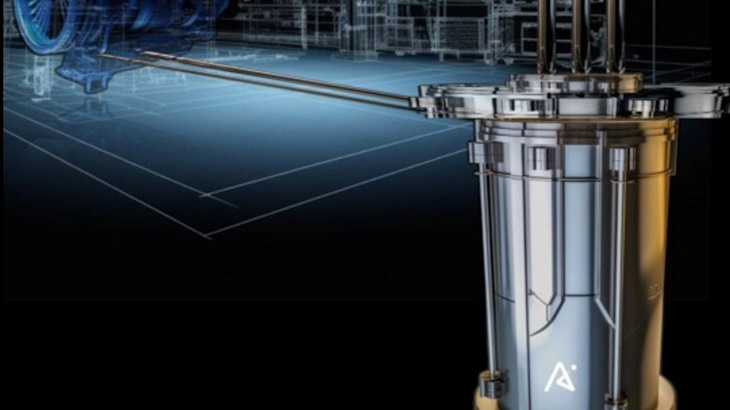 world-nuclear-news.org
world-nuclear-news.org
US developer Aalo Atomics has announced it is partnering with Idaho Falls Power in a project aiming to deploy seven factory-built Aalo-1 microreactors, totalling 75 MWe of generation. The Aalo-1 microreactors will be constructed at the company's reactor factory and headquarters in Austin, Texas. "The reactors for this project could be the first factory-built commercial microreactors in this country," Aalo Chief Technical Officer Yasir Arafat said. "This approach will allow significantly higher predictability in quality, cost, and schedule than today's large-scale plants, which, at best, take nearly a decade to build." Aalo said its memorandum of understanding with Idaho Falls Power will deliver clean, dependable power to the city of Idaho Falls and will "open the door for surrounding communities to harness the benefits of advanced nuclear technology". Idaho Falls Power will use part of the microreactors' output, with the remaining power being made available to surrounding municipalities and other commercial applications. Municipal electric utility Idaho Falls Power currently operates, owns and operates five hydropower plants along the Snake River, which provide about one-third of the electricity used in the city of Idaho Falls. It also owns a "small" solar installation, but purchases most of the balance of its power from the Bonneville Power Administration. The utility said it is "negotiating a power purchase agreement with Aalo Atomics" under which Aalo would lease land for the life of the project, up to 80 years, at Idaho Falls Power's new Energy Research Park, where it recently began construction of a 17.5 MWe natural gas plant. Aalo said its choice of Idaho Falls was strategic, building on the region's rich history of nuclear innovation and ongoing development, and strong public support for nuclear. Earlier this year, Aalo announced it had completed the conceptual design of the Aalo-1 - a factory-fabricated 10 MWe sodium-cooled microreactor using uranium zirconium hydride fuel elements. It is working on the construction of a non-nuclear test reactor (Aalo-0), at its Austin HQ, and plans to build its first nuclear reactor - the Aalo Experimental reactor (Aalo-X) - at Idaho National Laboratory as part of its phased approach to development and deployment. In line with this development philosophy, the MoU with Idaho Falls Power stipulates that the project will only proceed to full construction once specific cost and uncertainty milestones are met, Aalo said, protecting both parties from potential setbacks. Aalo is also pursuing other parallel commercialisation paths. "This phased approach allows us to minimise risks while still pushing the boundaries with new nuclear technology," Aalo CEO Matt Loszak said. "We've built in multiple layers of risk reduction so that both partners can move forward with confidence." Aalo said it was moving forward with plans to secure regulatory approval from the US Nuclear Regulatory Commission, with the Idaho Falls project "slated to go online before the end of the 2020s" - although Idaho Falls Power has said the project "is not expected to come online before 2030".
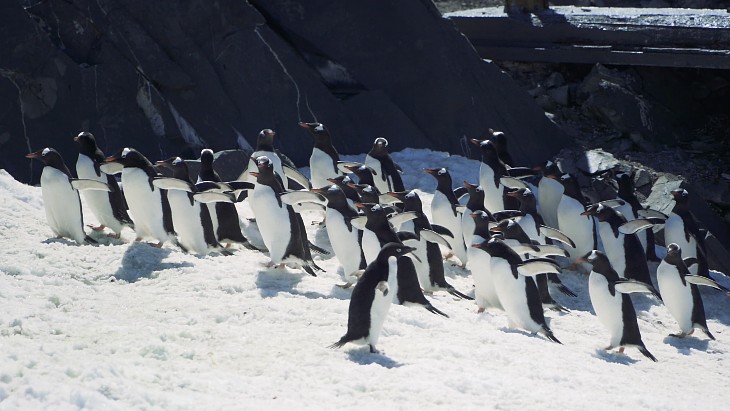 world-nuclear-news.org
world-nuclear-news.org
The first results of the pioneering scientific research project launched earlier this year have catalogued microplastic particles in the sea water, sediment and animals in Antarctica. The preliminary results were outlined during an International Atomic Energy Agency (IAEA) General Conference session focusing on the study, which is supported by Argentina and forms part of the wider IAEA NUTEC plastics initiative, which aims to use nuclear technologies to tackle plastic pollution. Nathalie Bernard, from the IAEA Marine Environment Laboratories and University of Buenos Aires, unveiling the results, said that "sadly we have found microplastics everywhere, on every sample, every matrix". She said that the concentrations of microplastics varied by location and by day. More than 250 samples were collected from the Almirante Irizer icebreaker, which sailed 27,209 kilometres over 125 days covering 84 sampling stations. Over the course of a week 166 samples were collected from Argentina's Carlini research station base as part of what was described as the first study of microplastics pollution from South America to Antarctica. The samples were of water, of sediment and also of penguin droppings and shellfish. Bernard said: "All of these results were possible thanks to nuclear techniques, specifically vibrational microspectroscopy which allows us not only to count, but also identify polymers. We were able to analyse particles as small as 20 microns (WNN note: for comparison a human hair is about 100 microns) and this is important because we found out that almost 90% of the particles we analysed were smaller than 100 microns and ... most of the studies conducted before have focused on larger particles, larger than 300 microns, which clearly overlooks the larger majority." The preliminary results - with 30% of the samples analysed so far, found that in terms of distribution in water, in Buenos Aires it was 256 microplastic particles per litre, compared with 5 microplastics particles per litre in the Antarctic Ocean and 21 microplastics particles per litre at Carlini Station in the Antarctic. The Carlini samples found 6000-15,000 microplastic particles per kilogramme of sediment, 15 microplastic particles per square metre of sand and 200-4000 microplastic particles per biological sample of shellfish or penguin droppings. There were 11 different types of plastics found in the samples, 62% were "Teflon-like microplastics" and 29% were polyethylene-like. Examples of the types of products using the types of plastics found included frying pans, PVC pipes and plastic drinks bottles. The early theories about the possible sources of the pollution in Antarctica include fisheries, local human activities and global sources, via the atmosphere or ocean currents. Bernard said that the conclusions of the preliminary study was that "we know now that microplastics are everywhere, that we can find different levels and types between the sites and that the levels in Antarctica are relatively low if we compare them with highly populated industrial zones - but they are far away from zero, which is what it was thought to be until recently in Antarctica.". The next steps are to finalise the analysis and do extra checks before sharing the results globally and using the figures as a baseline for future surveys, to assess possible pollution sources and inform policy makers for local and global actions in line with the Antarctic Treaty. The meeting also heard progress reports on the United Nations actions to end plastics pollution and how the NUTEC initiative can help with plastics upcycling using irradiation to allow plastic waste to not just be traditionally recycled, but also used in cement or in wood/plastic composits - one of the examples given was Argentina using radiation-modified railway sleepers from plastic waste. Argentina's Foreign Affairs Minister Diana Mondino said that the country was one of the original signatories of the Antarctic Treaty and said: "There's growing concern in understanding the impact in the Antarctic ecosystem from plastics and microplastics." She said the results had prompted the creation of a regional group in Latin America led by Argentina to focus on the issue. IAEA Director General Rafael Mariano Grossi said the NUTEC initiative had been well received because "we do have a serious problem with microplastics, nanoplastics and we did also have a scarcity of information, objective information". He said having the facts was important so people can take "informed decisions when it comes to the protection of this environment, which is so pristine and that we all care for". "This is not a simple environmental endeavour that we take for the sake of knowing a little bit more - the idea is that we provide important information that is relevant for fisheries, relevant for very important economic activities in all our countries." Australia's ambassador Ian Biggs said that Australia had a major stake in the international effort in Antarctica and he said that according to projections there could soon be a tonne of plastic in the ocean for every three tonnes of fish, saying this showed the necessity of action to tackle plastic pollution and he said Australia believed that the NUTEC programme was "making a real difference in helping countries address pressing global challenges on plastic pollution". The background The IAEA's NUTEC plastics scheme was established in 2020 and uses a series of monitoring laboratories to use nuclear technology to sample and analyse microplastics - which are bits of plastic less than 5 millimetres in diameter - in the environment. There are more than 60 countries participating in monitoring of microplastics in the sea, and the goal is to equip more than 50 laboratories with the technology to form a global monitoring network. The aim is to then be able to take action to bring in measures designed to reduce the sources of the pollution - at least 30 countries are involved in developing innovative recycling technology, including using irradiation to treat plastics and make them fit for reuse, or for a wider range of reuses. This process uses gamma and electron beam radiation technologies to modify certain types of plastic waste, breaking down plastic polymers judged not to be of sufficient quality into smaller components and then allowing them to be used to generate new plastic products. The IAEA cites studies suggesting that only around 10% of plastic produced between 1950 and 2015 has been recycled, with the majority (about 60%) going to landfill, meaning action is imperative given estimates that there will be one tonne of plastic for every three tonnes of fish within a few years. Grossi visited an IAEA mission in Antarctica in January with Argentina's president to see the start of work for the project, with the IAEA explaining that "there is still almost no information available on where and how much microplastics arrive in the Antarctic and how much is taken up by Antarctic organisms. There is also very little data existing on the types of microplastics reaching this pristine area through ocean currents, atmospheric deposition and the presence of humans in the Antarctic". It also said the "presence of microplastics can contribute to accelerating the ice-loss in Antarctica by reducing ice reflectivity, altering surface roughness, promoting microbial activity, acting as thermal insulators, and contributing to mechanical weakening of the ice structure".
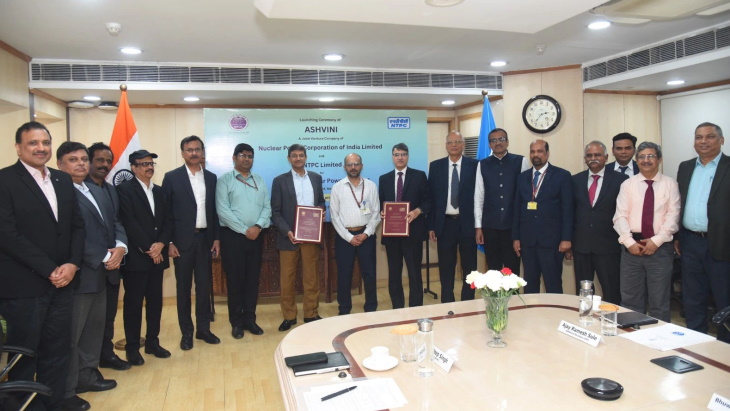 world-nuclear-news.org
world-nuclear-news.org
The Indian government has approved the creation of a joint venture between Nuclear Power Corporation of India Limited and National Thermal Power Corporation to construct, own and operate nuclear power plants in India. Under Indian legislation, only two companies - Nuclear Power Corporation of India Ltd (NPCIL) and Bharatiya Nabhikiya Vidyut Nigam Limited (Bhavini, set up to build and operate fast reactors) - are legally allowed to own and operate nuclear power plants in India, but a 2016 amendment to the 1962 Atomic Energy Act allows public sector joint ventures. State-owned National Thermal Power Corporation (NTPC) agreed with NPCIL to form a joint venture for nuclear power plant construction as long ago as 2011, and last year signed a supplementary joint venture agreement for the development of six 700 MWe Indian-designed pressurised heavy water reactors (PHWRs), including the four earmarked for construction at Mahi Banswara in the state of Rajasthan. These units are amongst a list of ten PHWRs already accorded administrative approval and financial sanction to be built in "fleet mode". On 11 September, the government approved the formation of Anushakti Vidhyut Nigam Ltd (Ashvini), a joint venture between NPCIL (51%) and NTPC Ltd (49%). The companies were informed of that decision on 17 September. In addition, the government has approved the transfer of the project to build four 700 MWe PHWRs at Mahi Banswara from NPCIL to Ashvini. NTPC said that, in addition to the Mahi Banswara project, "Ashvini shall also pursue other nuclear power projects in different parts of the country". The government also approved exemption to NPCIL to invest more than INR5 billion (USD59.7 million) and exemption to NTPC to invest more than INR50 billion in a single joint venture or subsidiary company. "This will enable adequate financing for accelerated nuclear power capacity addition in India," the two companies said. Welcoming approval for the joint venture, NPCIL and NTPC said: "This will pave the way for pooling of resources from both NTPC and NPCIL, in terms of finances, technology and project expertise, for the rapid expansion of nuclear power productivity in the country to meet the target of net-zero by 2070." Last month, NTPC - India's largest power company - confirmed it intends to set up a 100% nuclear power subsidiary, called NTPC Nuclear Power Company, with NTPC Chairman and Managing Director Gurdeep Singh saying the utility sees nuclear capacity - including small modular reactors - as central to its plans. Singh said the company is actively looking for locations for nuclear power plants, including in Gujarat, Tamil Nadu, Chhattisgarh, Odisha and Karnataka. According to a Reuters report in February, government sources said India was planning to invite private firms to invest some USD26 billion in its nuclear energy sector, and is in talks with "at least" five private firms including Reliance Industries, Tata Power, Adani Power and Vedanta Ltd to invest around INR440 billion (USD5.30 billion) each. Plans are not yet finalised, but the government hopes to use the investments to build 11,000 MWe of new nuclear capacity by 2040, the sources said. The plants would be built and operated by NPCIL, with the investing companies earning revenue from electricity sales from the plants. This hybrid plan would not require any amendment to India's Atomic Energy Act of 1962 - which prohibits private control of nuclear power generation - but would need to be approved by the Department of Atomic Energy, they said. As well as further 700 MWe PHWRs, Indian plans envisage the construction of large reactors from overseas vendors, including further Russian-designed VVER reactors in addition to those already in operation and under construction at Kudankulam in Tamil Nadu. In August 2023, Minister of State Jitendra Singh also told the country's parliament that the government was considering options for small modular reactors, and looking at ways to allow the participation of the private sector and start-ups in such projects.
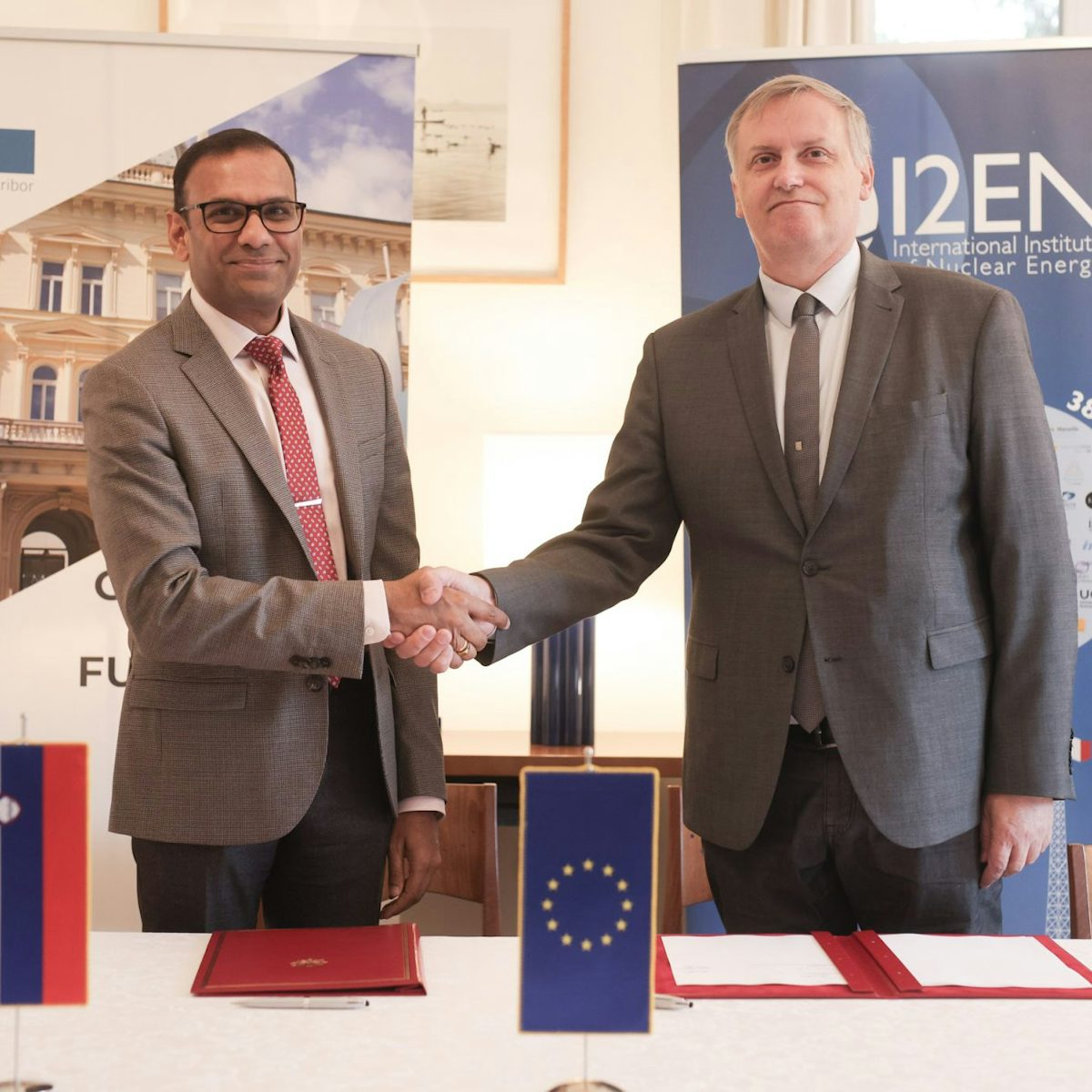 www.nucnet.org
www.nucnet.org
French state-owned energy company EDF and France-based International Institute of Nuclear Energy (I2EN) have signed agreements with Slovenian scientific institutions to improve cooperation in the civil uses of nuclear energy. The agreements, signed at the French embassy in Slovenia, aim to advance research, development, training, and education in nuclear energy, officials said. Thes efforts are part of a broader cooperation between France and Slovenia, supported by EDF for several years, Vakisasai Ramany, senior vice-president for international nuclear development at EDF, said on social media. One of the agreements was signed between EDF and Slovenia’s Jožef Stefan Institute (IJS). It focuses on research and development for nuclear power plants and small modular reactors. A second agreement was signed between I2EN and the University of Maribor. It aims to develop higher education programmes in nuclear science and technology, with initiatives including student and researcher exchanges, joint European projects, and potential internships in France. Slovenia has been considering the construction of a new reactor unit at its existing Krsko nuclear station and earlier reports said a final decision on the project would be made in 2027 or 2028, with commercial operation in the mid-2040s. The existing single 688-MW pressurised water reactor at Krkso is co-owned in equal shares by the governments of Slovenia and neighbouring Croatia. It is the only nuclear plant in Slovenia. Slovenia has received offers for its new-build plans from three suppliers including EDF, South Korean KHNP, and US-based Westinghouse Electric. Slovenian state secretary Jure Gasparic highlighted earlier this week the importance of nuclear energy for the country’s green transition, alongside renewable energy sources. “We are aware that the development of a successful and safe nuclear programme requires cooperation between industry, science and the government, strengthened by international partnerships,” Gasparic was quoted by local media as saying.
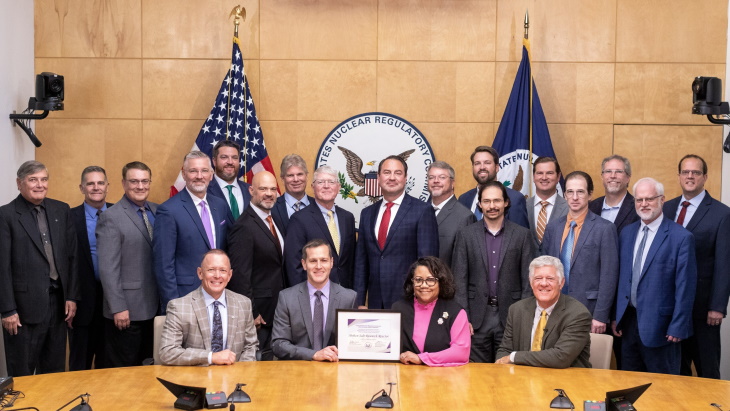 world-nuclear-news.org
world-nuclear-news.org
The US Nuclear Regulatory Commission has issued a licence to Abilene Christian University for the construction of a molten salt research reactor on its campus in Abilene, Texas. This marks the first construction permit for a liquid-fueled advanced reactor and only the second for any advanced reactor issued by the NRC. In March 2020, Abilene Christian University (ACU) submitted to the NRC a Letter of Intent to apply for a construction permit for a non-power molten salt reactor. In July 2020, it submitted a Regulatory Engagement Plan related to this project. ACU submitted its construction licence application - including a Preliminary Safety Analysis Report and an Environmental Review - to the NRC in August 2022. The NRC accepted the application for review three months later. ACU submitted updates in November 2023 and July 2024. ACU's molten salt research reactor (MSRR) will be the first deployment of the Natura MSR-1, a 1 MWt, graphite-moderated, fluoride salt flowing fluid (fuel dissolved in the salt) research reactor. The MSRR will be used for on-campus nuclear research and training opportunities for faculty, staff and students in advanced nuclear technologies. The reactor will significantly expand the university's salt reactor research and development infrastructure, supporting US molten salt reactor design, development, deployment and market penetration. The NRC issued its final environmental assessment for the site on 7 March with a finding of "no significant impact". On 16 September, the NRC completed its final safety evaluation for the reactor design, concluding the Natura MSR-1 meets federal regulations and is safe to construct. "This is the first research reactor project we've approved for construction in decades, and the staff successfully worked with ACU to resolve several technical issues with this novel design," said Andrea Veil, Director of the NRC's Office of Nuclear Reactor Regulation. "Going forward, we'll have inspectors on the ACU campus when construction gets started." Natura Resources LLC said Zachry Nuclear Engineering will complete the detailed engineering and design of its Natura MSR-1 in "the first part of 2025, which will be followed quickly by the submission of the operating licence application to the NRC". ACU is the lead university in the NEXT Research Alliance, which includes Georgia Institute of Technology, Texas A&M University and The University of Texas at Austin. The alliance has a USD30.5 million research agreement with Natura Resources to license and deploy the MSRR, which will be located at ACU's Dillard Science and Engineering Research Center, the USA's first advanced reactor demonstration facility outside of a national laboratory. Construction of the centre was completed in August last year. "ACU is thrilled to have Natura as a partner as we work together to answer the world's increased demand for reliable energy, medical isotopes, and clean water through the deployment of liquid-fueled molten salt reactors," said ACU President Phil Schubert. "With the NRC's issuance of the construction permit, we are one step closer to making that a reality. The performance-driven approach of Natura Resources to advanced reactor deployment has quickly moved them from a relative unknown to a leader in the upstart advanced reactor industry." The research reactor will be Natura's first deployment and accelerates the development of its 100 MWe systems for commercial applications. To that end, Natura is working to develop a small modular MSR system and recently announced a partnership with the Texas Produced Water Consortium to explore the deployment of Natura's liquid-fueled molten salt technology providing additional sources of reliable, dispatchable energy paired with water treatment facilities. "If we're going to meet the growing energy needs, not only in the State of Texas but in our country and the world at large, we must begin deploying advanced nuclear reactors," said Natura Resources founder and President Douglass Robison. "The Natura MSR-1 deployment at ACU will not only demonstrate successful licensure of a liquid-fueled molten salt reactor but will provide operational data that will allow us to safely and efficiently design and deploy our commercial systems."
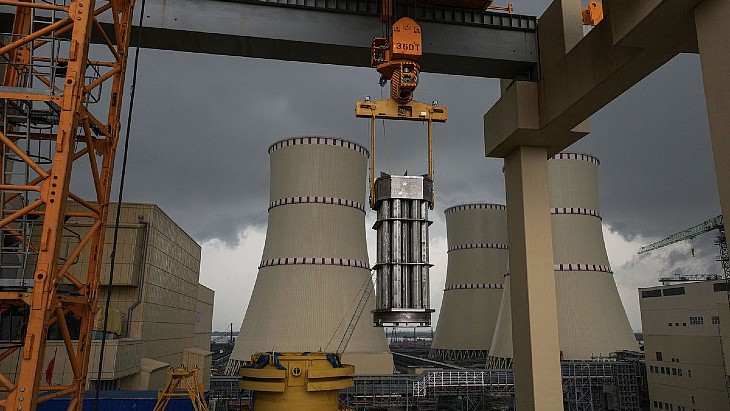 world-nuclear-news.org
world-nuclear-news.org
The construction project for Bangladesh's first nuclear power plant has hit a fresh landmark with dummy fuel assemblies being loaded into unit 1 of the Rooppur nuclear power plant. The dummy fuel assemblies' dimensions, weight and materials are exact replicas of standard fuel assemblies, but without nuclear fuel. They are designed to check the geometry of the reactor core and are a key step of the start-up process for a new nuclear unit. In addition to ensuring the quality of the loading and handling processes, they will also help to confirm the hydraulic parameters of the reactor plant during circulation flushing and reactor cold and hot tests preceding physical start-up of the unit. Nuclear fuel loading will only take place after the tests with the dummy fuel assemblies have been successfully carried out. The Rooppur plant, 160 kilometres from the capital Dhaka, features two Russian VVER-1200 reactors. Rosatom in February 2011 signed an agreement for two reactors to be built at Rooppur for the Bangladesh Atomic Energy Commission. The initial contract for the project, worth USD12.65 billion, was signed in December 2015. The Bangladesh Atomic Regulatory Authority issued the first site licence for the Rooppur plant in June 2016, allowing preliminary site works, including geological surveys, to begin. Construction of the first unit began in November 2017. Construction of the second unit began in July 2018. They have an initial life-cycle of 60 years, with a further 20-year extension possible. Denis Muzlov, Director of Atomtechenergo JSC Branch in Bangladesh, said that all 163 dummy fuel assemblies (DFA) would be loaded over the next few days, with the work continuing round the clock. "Loading of one DFA into the reactor, using the refuelling machine in automatic mode, takes 25 minutes on average. After the DFA loading, we will start preparing the reactor for subsequent circulation flushing and cold and hot tests." Alexey Deriy, ASE JSC Vice President for Projects in Bangladesh, said the project was a demonstration of Rosatom "creating the conditions for development of new industries in its partner countries. Construction of Rooppur NPP is going on, the start-up and adjustment works at unit 1 are in full swing. Upon the power plant start-up, Bangladesh will be provided with electricity for further development of the country."
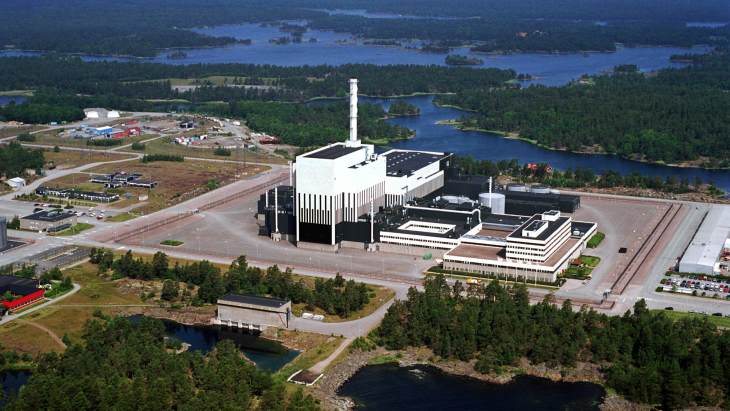 world-nuclear-news.org
world-nuclear-news.org
The owners of the Oskarshamn nuclear power plant in Sweden have decided to begin a preliminary study on what measures can be taken to extend the operating life of unit 3 from 60 to 80 years. The boiling water reactor was commissioned in 1985, and its service life and production capacity were increased in 2009. The total power of the plant is about 1450 MWe and the annual production is around 11 TWh. Uniper is the majority owner of Oskarshamn with a 54.5% share, with Fortum holding the remaining 45.5%. The unit currently has a planned operating period until 2045 but Fortum said: "The owners estimate that the current reactor will be able to produce electricity well into the 2060s." "The next step is to broaden and deepen the analysis work in order to take into account all the relevant perspectives that an operating time extension would entail," Uniper added. "It is a very welcome orientation decision," Uniper Sweden CEO Johan Svenningsson said. "This means that Uniper gets a solid basis for a decision to extend the operating time of Oskarshamn 3 to 80 years, in the early 2030s. The existing nuclear power is an important component for a stable and reliable energy system." Uniper noted: "In addition to safe and reliable operation, market conditions are also required where the importance of nuclear power for the energy system is valued. In addition to energy delivery, it may include support services for system stability." "Nuclear power is important for Sweden," Svenningsson said. "In addition to delivering large amounts of fossil-free and predictable electricity, nuclear power provides stability and an increased ability to transport electricity from all types of power in the transmission system. "Nuclear power is also important to Uniper. We ensure the operation of Swedish nuclear power by continuously investing in today's facilities and carefully following the global technological development in the nuclear power field." As swell as owning a share in the Oskarshamn plant, Germany-based Uniper also owns shares in Sweden's Ringhals, Forsmark and Barsebäck nuclear power plants, as well as in Swedish Nuclear Fuel Handling. Finland's Fortum made a similar decision together with Vattenfall in June this year to assess the possibility of extending the operating lifetime of the Forsmark plants' two pressurised water reactors from 60 to 80 years.
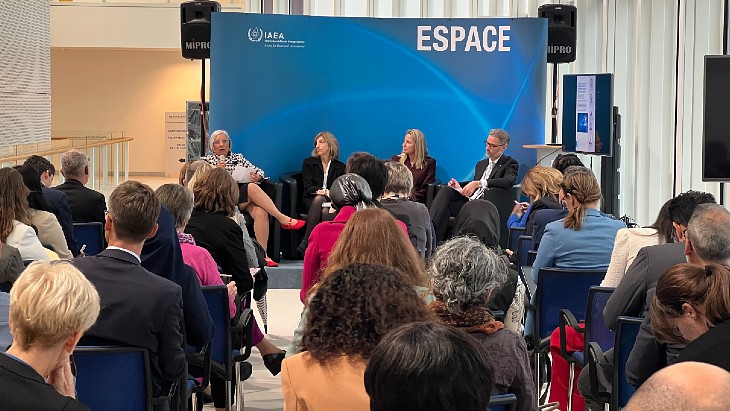 world-nuclear-news.org
world-nuclear-news.org
The urgency of the demand for new nuclear capacity means that leadership will need to embrace change and look outside the sector for ideas and personnel, an IAEA General Conference panel discussion heard. At a packed session called Leaders in nuclear: building effective leadership skills in the nuclear sector, Margaret Doane, International Atomic Energy Agency Deputy Director General and Head of the Department of Management, said that collaboration between the agency and the nuclear industry was greater than it had ever been, Asked what the key leadership challenge was for meeting the widely shared goal of tripling nuclear energy capacity by 2050, she said: “Resilience. What I mean by that is that we have got to be much more accepting of change. I think in nuclear we were very risk-averse and the reason was because we wanted to put in place a very good, strong, safety culture, we wanted to have regulations that were well understood, we wanted to build trust in the communities and we did this through … very transparent processes that were also very long. And this was essential, but now ... to answer these very challenging climate change questions … that has to go much quicker. "All of us who have been in the field for years are still going to be necessary because you have a lot of the answers, but we have to be resilient in a way that we are accepting of change,” she said, picking up on a theme in the discussion about the need for a multigenerational outlook - “so many staff who are coming in have experience with technology that we don’t have, they have different ways of thinking, they’re experimenting and thinking of different designs. All kinds of different things coming out of the universities will move us ahead but we have to be open minded to accept this". Sama Bilbao y León, Director General of World Nuclear Association, said that the immediate focus was on attracting and inspiring the next generation of leaders - "leaders at every level - not everybody will be the CEO but everybody can be leaders in their area". She said that leaders needed to be pragmatic and realistic, but boldness and curiosity were among the attributes required as well. Along with the other speakers she referred to the positive impact on leadership from initiatives such as World Nuclear University. There was a need to be open-minded to learn from other industries, Bilbao y León said, and cited the work of entrepreneurs, SpaceX, the aerospace industry and the pharmaceutical sector, who managed to create a Covid-19 vaccine within a matter of months, before asking, “So can we get that kind of urgency in nuclear?” She said collaboration was important and there was a need to "articulate this ambition (to triple nuclear energy capacity) in a way that is not just a goal, but a path to actually deliver that ambition - so we are working with the IAEA, with member states and with industry to develop this path, these industrial policies - not just energy policies - that are going to get us there." Daniel Westlén, State Secretary to the Minister for Climate and Environment in Sweden, said that it was important to create an environment where companies, regulators and politicians were all working to the same timescales, with the need to promote long-term thinking and for politicians to build the trust that there will be the relevant regulations and support schemes introduced “whatever it takes”. He also said that efforts to tackle diversity issues had been important and a key issue now was “diversity of personality … this industry has for quite some time structured itself in order to protect the core and to regulate. We have been attracting the kind of people that love structures and to follow procedures, which has been really beneficial because that’s what we need for reactor safety. But it kind of scares other personalities away from us, so this business is not full of entrepreneurs any more - it was in the 1950s and 1960s but these people have to be attracted back to the business." Rumina Velshi, IAEA International Safety Advisory Group member and former Canadian Nuclear Safety Commission CEO, who moderated the hour-long discussion, said that the key points had been the need for collaboration, for urgency and the need for diversity - in terms of gender, age, backgrounds and outlooks - and also for considering the multi-generational aspects of decisions that may have an impact for many decades to come. “I think what we have heard here today is a recognition that while we have such great ambitions and aspirations there’s a lot of work ahead to be done.”
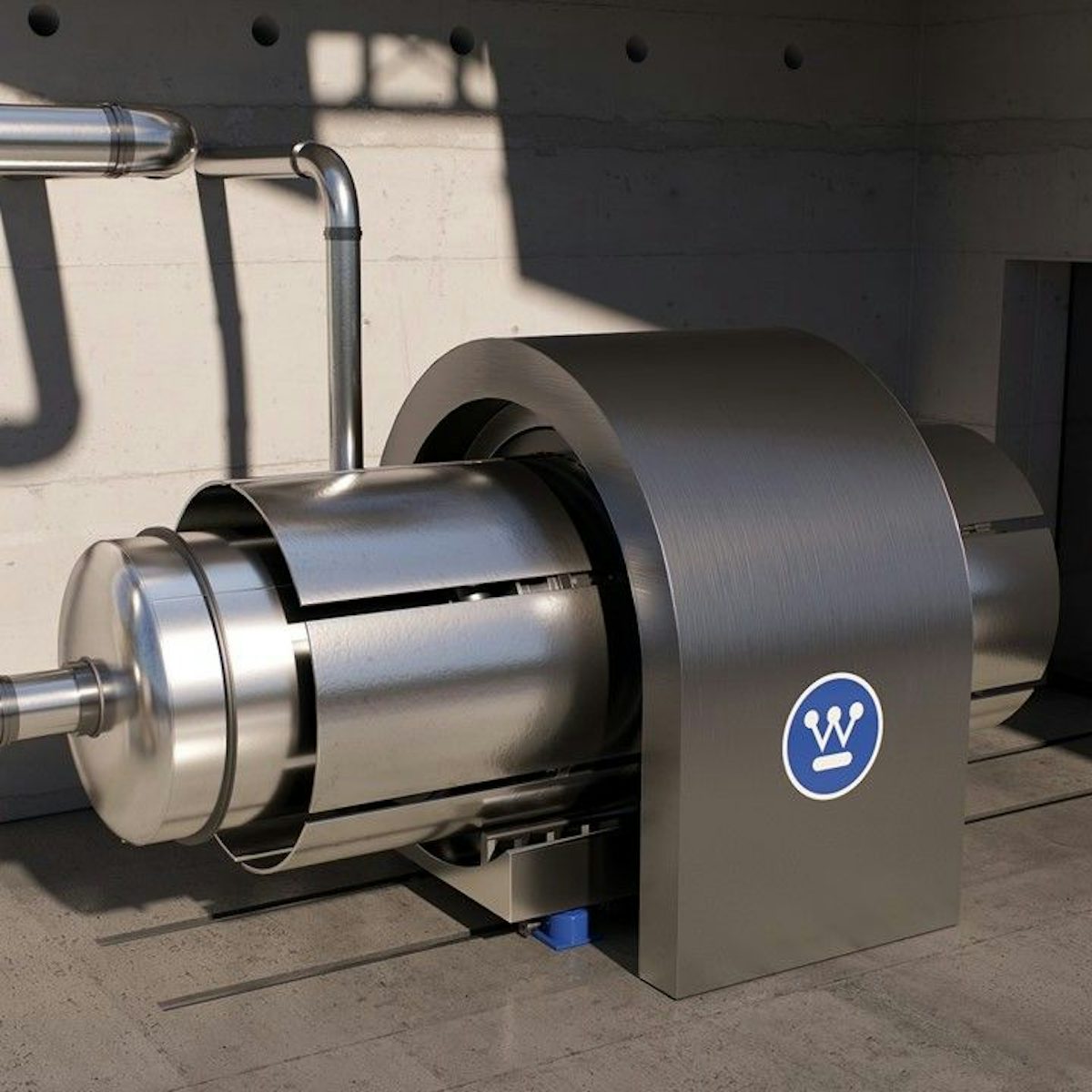 www.nucnet.org
www.nucnet.org
Westinghouse Electric Company has submitted a preliminary safety design report (PSDR) for its eVinci microreactor to the US Department of Energy’s National Reactor Innovation Centre (NRIC) in a move towards potentially siting a demonstrator project at the Idaho National Laboratory (INL). Westinghouse said in a statement this is the first time a reactor developer has reached “this milestone” on the path to deploying a test reactor at NRIC’s Demonstration of Microreactor Experiments (Dome) test bed at INL. The PSDR follows a recently completed front-end engineering and experiment design process and is key to Westinghouse’s goal of deploying the eVinci microreactor globally by 2030, the statement said. “The completion of the PSDR for the eVinci test reactor is an important step towards enabling a microreactor developer to perform a test in our Dome facility,” said Brad Tomer, acting director of NRIC. The preliminary safety design report is a document that outlines the safety design aspects of a nuclear reactor or other complex systems and typically includes assessments of potential risks, operational guidelines, and safety measures needed to ensure the safe development and operation of the reactor. Westinghouse said next steps will include the development of a timeline for an “end-to-end” reactor test programme at INL, along with a preliminary documented safety analyses submission. This will be the third of four DOE submissions needed for Westinghouse to install the test reactor at the Dome test bed. NRIC is a DOE initiative designed to accelerate the development and deployment of advanced nuclear reactor technologies. Hosted at INL, NRIC provides resources and facilities for private companies and researchers to test, demonstrate, and validate new reactor designs. Westinghouse said NRIC’s objective is to create four new experimental facilities and two large reactor test beds by 2028 for comprehensive technology demonstrations and experiments, and to finalise two advanced nuclear technology experiments by 2030. According to earlier reports, eVinci is a very small modular reactor for decentralised heat and power generation including off-grid sites, remote communities, disaster recovery, industrial sites, defence facilities, marine propulsion, hydrogen generation, and water purification among others. The small size of the eVinci reactor, between 5-10 MW, will allow for easier transportation and rapid onsite installation, Westinghouse has previously said. The reactor has very few moving parts and works essentially as a battery. The test reactor, a one-fifth scale representation of an actual eVinci microreactor, will enable design finalisation, testing and licensing of the technology, Westinghouse has said. In October 2023, the DOE awarded $3.9m (€3.5m) to three US-based advanced nuclear energy technologies – Radiant’s Kaleidos, Ultra Safe’s Pylon and Westinghouse’s eVinci – to design experiments to test microreactor designs in the INL’s Dome test bed.
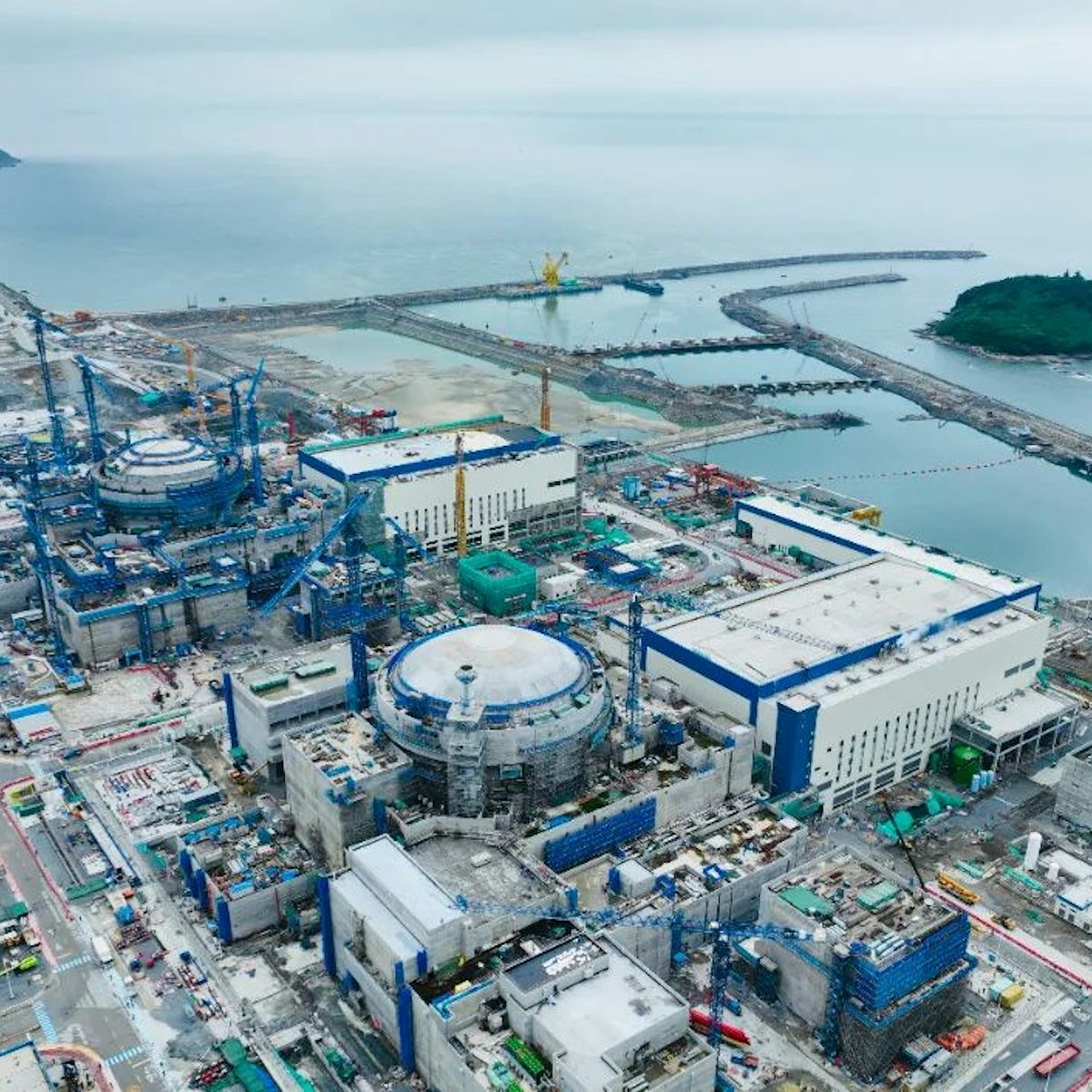 www.nucnet.org
www.nucnet.org
Hot functional testing has been completed at t China’s Taipingling-1 nuclear power unit under construction in the southern province of Guangdong, the China Nuclear Energy Association (CNEA) said. Hot testing usually takes place over several weeks and consists of multiple tests performed on major systems to check their performance under normal operational conditions, without any nuclear fuel assemblies in the reactor. Taipingling-1 is a domestically developed HPR1000, or Hualong One, pressurised water reactor unit. Construction began for two units at the site, Taipingling-1 and -2, in December 2019 and October 2020. CNEA said hot testing was completed at 10:00 local time on 15 September. The reactor unit will now be ready for subsequent commissioning steps including fuel loading and initial reactor startup. China General Nuclear (CGN) has previously said there are plans in place for six Hualong One PWR units at the Taipingling site. China has 16 Hualong One units under construction domestically at eight sites – one unit each at Ningde, Shidaowan and Fangchenggang; two units each at Changjiang, Lufeng, Taipingling, Sanaocun and Jinqimen; and three units at Zhangzhou. China has 56 commercial reactors in operation, the same number as France and second only to the US, which has 94. The country has 30 commercial nuclear power units under construction. The International Atomic Energy Agency’s reactor database says the number is 28, but does not include the Jinqimen site, where China National Nuclear Corporation said in February that construction of two units had begun.
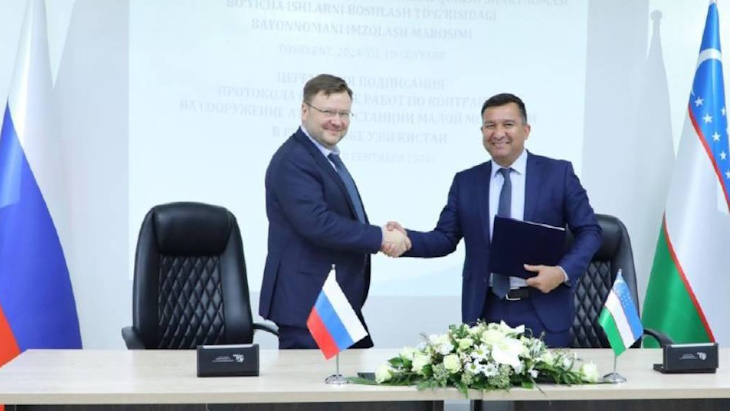 world-nuclear-news.org
world-nuclear-news.org
The signature of a protocol by UzAtom's Directorate for Construction of a Nuclear Power Plant and JSC Atomstroyexport - the engineering division of Russia's Rosatom - means work can begin at the site of Uzbekistan's first nuclear power plant. The document follows the signature in May of a contract for a six-unit small modular reactor (SMR) nuclear power plant to be built in the Jizzakh region of Uzbekistan, based on the RITM-200N pressurised water reactor. The 55 MW RITM-200N is adapted from the RITM-200 used in Russia's nuclear icebreakers. This is the first export order for the Russian SMR: the first land-based version is currently being built in Yakutia in Russia's Arctic North, aiming for commissioning in 2028. The latest protocol was signed in the presence of Nikolay Spassky, deputy CEO for International Relations at Rosatom, and Azim Akhmedkhadjayev, director of the UzAtom Atomic Energy Agency. "Today's signing marks the transition to active work on the implementation of the first LPNPP [low-power nuclear power plant] in Uzbekistan and will allow us to begin direct work at the construction site soon," said Otabek Amanov, director of the Directorate. Pavel Bezrukov, Atomstroyexport's director of NPP Construction Projects in Central Asia, said the protocol confirms the fulfillment of the priority conditions in terms of regulatory and financial obligations of the parties. "Rosatom's Engineering Division is beginning to actively develop the documentation to obtain a licence for the placement of the LPNPP and survey work at the construction site," he said. Infrastructure work began at the Jizzakh site in June, with work to set up a rotational camp for plant construction workers beginning in August. This is the first step in the "integrated development" of the area where the plant will operate. Rosatom said: "Cultural, educational projects, medical organisations will appear in the region, and the settlement will attract people to live, industrial companies and commercial organisations to work."
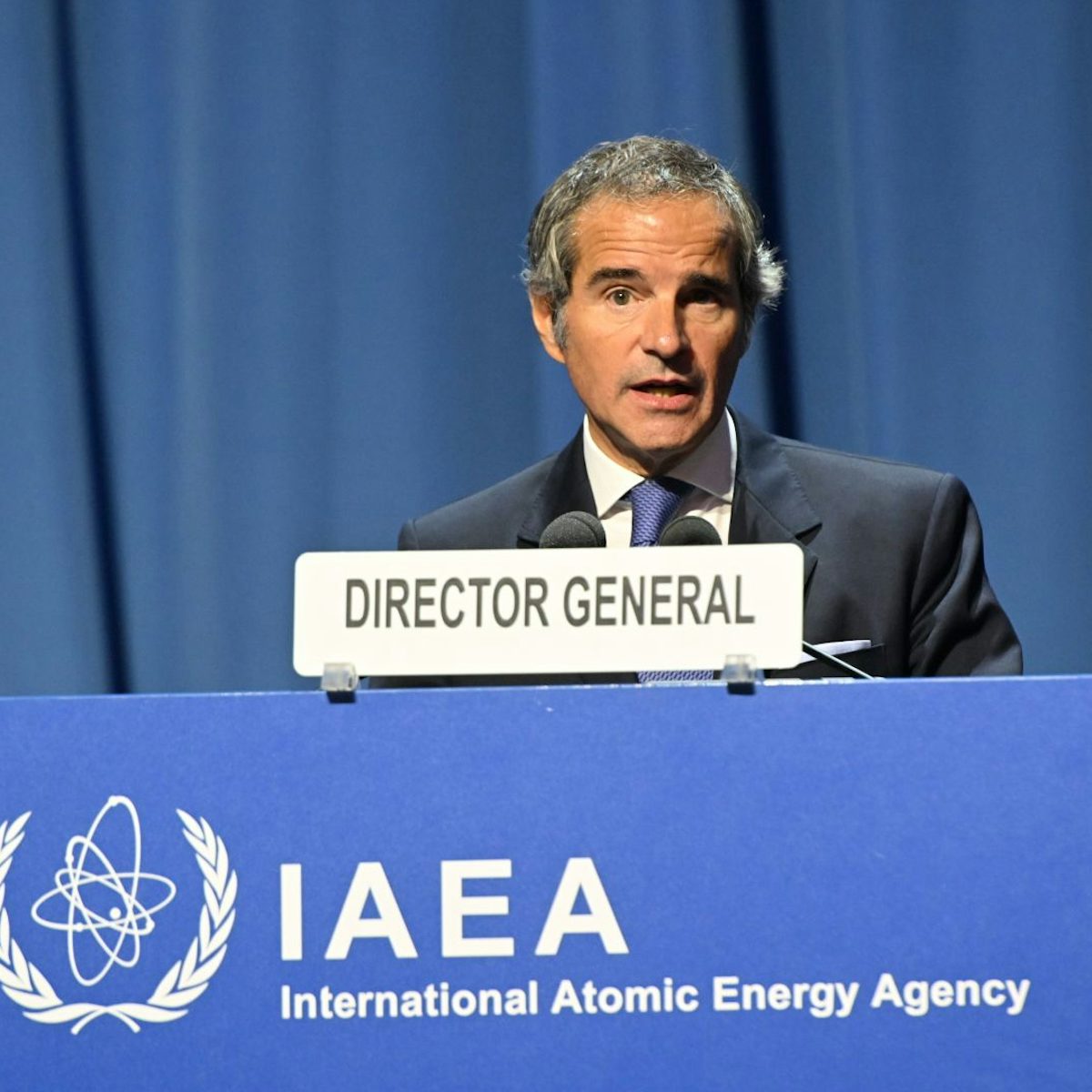 www.nucnet.org
www.nucnet.org
The International Atomic Energy Agency (IAEA) forecasts a significant increase in global nuclear power capacity by 2050, with capacity potentially growing by 2.5 times current levels, according to its Energy, Electricity and Nuclear Power Estimates for The Period Up To 2050 report released on Monday (16 September). The report found two scenarios for nuclear power growth. In the high case, global nuclear capacity is projected to rise from 372 GW in 2023 to 950 GW by 2050 (2.5 times), largely driven by expanding climate goals and energy security demands. In the low case, capacity would increase more modestly by 40% to 514 GW over the same period. Small modular reactors (SMRs) are expected to play a role in future capacity expansion, potentially accounting for up to 24% of new nuclear capacity by 2050, the IAEA report said. While nuclear power made up 9.2% of global electricity production in 2023 which reached about 28,4 TWh, the IAEA expects the share to rise slightly under its high scenario. However, the IAEA warned that the global energy mix remains heavily dependent on fossil fuels, with coal accounting for more than one-third of electricity production in 2023. At the end of 2023*, 413 nuclear reactors were operational worldwide, with a total capacity of 371.5 GW, the IAEA said. Additionally, 59 reactors with a combined capacity of 61.1 GW were under construction, and 25 reactors with a capacity of 21.3 GWwere in suspended operation. Over the year, five new reactors (5 GW) were connected to the grid, while five reactors (6 GW) were retired. Construction also began on six new reactors, further expanding global nuclear capacity. According to the IAEA, in 2023 the US was the number one producer of nuclear-powered electricity with about 779 TWh generated, followed by China with 406 TWh, and France with 323 TWh. Growing Recognition of Nuclear Power The IAEA report also highlighted both the challenges and opportunities for nuclear power, emphasising the need for supportive policies, investment in new technologies, and international collaboration to achieve long-term growth. Additionally, the report said that retiring reactors and aging infrastructure will require strategic investments in new plants to offset expected retirements, with about 30% of reactors currently in operation for over 40 years. The IAEA projections come as global energy demand continues to rise, driven by population growth, industrialisation, and the shift toward cleaner energy sources. IAEA director general Rafael Grossi told the agency’s 2024 general conference in Vienna that about a quarter of clean energy produced in the world today comes from nuclear power. “The new IAEA projections reflect increasing acknowledgement of nuclear power as a clean and secure energy supply, as well as increasing interest in SMRs to target both electric and non-electric applications to meet climate goals and foster sustainable development,” said Grossi. “We have come a long way from not being recognised in international conferences, or even rejected,” Grossi said adding that a global consensus on accelerating nuclear energy reached at the COP28 UN climate conference in Dubai has shown that the situation has changed. “We will be working with Azerbaijan [the host country] for COP29 where we expect to continue this very important effort,” he said.
 world-nuclear-news.org
world-nuclear-news.org
The generator stator has been hoisted into place at the ACP100 small modular reactor demonstration project at the Changjiang site on China's island province of Hainan, China National Nuclear Corporation has announced. The steam turbine generator set is the core component of the power plant that converts thermal energy into electrical energy, CNNC said. The generator for the ACP100 - also referred to as the Linglong One - consists of a stator, a rotor, a cooler and two bearing boxes. The generator stator - measuring about 6 metres in length and weighing more than 130 tonnes - was successfully placed on the generator base within the conventional island on 14 September. CNNC said the key difficulty with the hoisting operation lay in the small site area. "The generator stator needed to be hoisted by two cranes, passed through the maintenance hoisting hole to the steam turbine platform, and finally placed on the generator base, which required extremely high positioning accuracy," it said. It added, "The successful lifting and installation of the generator stator has laid a solid foundation for the subsequent installation of the steam turbine generator unit." CNNC announced in July 2019 the launch of a project to construct an ACP100 SMR at Changjiang. The site is already home to two operating CNP600 pressurised water reactors (PWRs), while the construction of the two Hualong One units began in March and December 2021. Both those units are due to enter commercial operation by the end of 2026. First concrete for the ACP100 was poured on 13 July 2021, with a planned total construction period of 58 months. Equipment installation work commenced in December 2022 and the main internal structure of the reactor building was completed in March 2023. The outer containment dome was hoisted into place in February this year. Under development since 2010, the 125 MWe ACP100 integrated PWR's preliminary design was completed in 2014. In 2016, the design became the first SMR to pass a safety review by the International Atomic Energy Agency. Once completed, the Changjiang ACP100 reactor will be capable of producing 1 billion kilowatt-hours of electricity annually, enough to meet the needs of 526,000 households. The reactor is designed for electricity production, heating, steam production or seawater desalination.
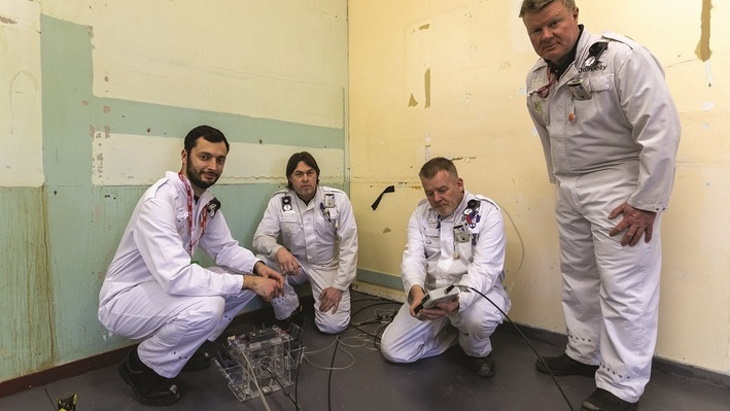 world-nuclear-news.org
world-nuclear-news.org
A new snake-like inspection robot has been trialed at the Dounreay site in Scotland, UK, to survey confined spaces. A team from Dounreay - the UK's centre for experimental fast breeder research and development from 1954 until 1994 - has been working with the University of Nottingham to develop a simple, inexpensive and potentially disposable robot that could access severely restricted areas that could not be reached by workers. Fitted with a camera, lights and finger dosemeters to detect radiation, the robot has now been trialed in one of Dounreay's redundant laboratories, to inspect the area under a turntable that dominates the cell. The technology was developed in response to a challenge by Game Changers, an innovation programme which finds solutions for complex nuclear industry challenges. Birchwood-based ICE9 Robotics - which specialises in customising robots for use in hazardous areas - also supported the team from Nottingham University during the deployments at Dounreay. Nuclear Restoration Services' (NRS) Dounreay project manager Jason Simpson said: "Surveys of the area under the turntable will be very useful to us in planning the decommissioning strategy of the laboratory." "It's been a pleasure to work with the team from Nottingham and help develop this from the initial prototype to the point where it was ready for deployment within an active environment," added NRS engineer Mark Crichton. In 2020, a group of engineers from the Robotics and Artificial Intelligence in Nuclear Hub - a consortium of universities led by the University of Manchester - brought a small remotely-operated surveying vehicle equipped with sensors, cameras and a manipulator arm to Dounreay. Initial trials in an inactive building provided useful information, and a limited survey in the laboratories took place in 2021. As a result of this field research, a second-generation robot called Lyra was developed, with an improved package of surveying measures including a detection system that uses lasers, multiple angle cameras, radiation probes and the ability to take swabs using the manipulator arm. In February 2022, the robot returned to Dounreay to carry out a survey of a 140-metre-long underfloor duct which runs under the central corridor between laboratories, providing useful information that will help to solve the challenge of decommissioning it. In June 2023, Dounreay Site Restoration Limited and the Nuclear Decommissioning Authority announced they had partnered with Createc to launch an innovative twelve-month programme of work, taking on seven different remote robotic sensing projects, across five different Dounreay teams. The projects - which span security, planning, environmental and safety use cases - all involve the deployment of Spot, a robotic quadruped. In September last year, Spot completed a trial at the Dounreay site, where it successfully navigated an evaporator cell in the Fuel Cycle Area that had been shut off for 25 years.
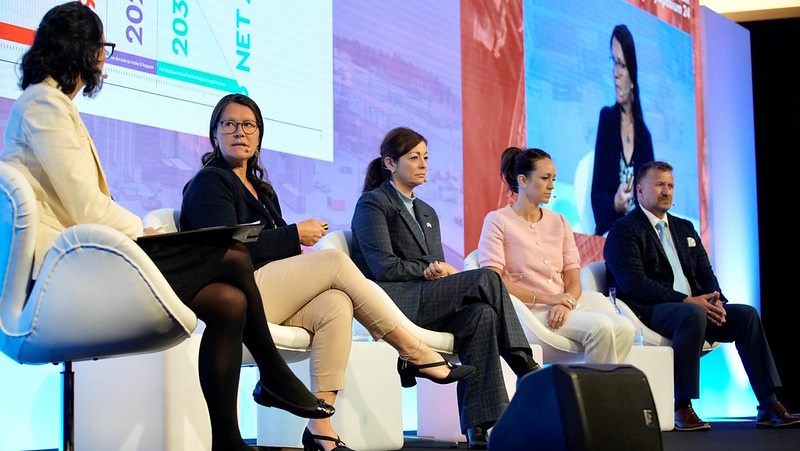 world-nuclear-news.org
world-nuclear-news.org
Artificial intelligence, large industrial energy intensive users, and electrification are driving a new market dynamic for more power - and it must also be clean, dependable and affordable. Panellists at World Nuclear Symposium 2024 looked at new business models that can help nuclear to meet new types of end-user needs. Chaired by Coralie Laurencin, senior director with the Gas, Power, and Energy Futures team at S&P Global Commodity Insights, the discussion titled Power Partners - Connecting end users with 24/7 energy brought together nuclear sector and end-user representatives to explore how the decarbonisation goals of energy users, as well as government policy, will drive the implementation of new nuclear, and the role of partnerships between businesses and industry in transitioning to a low-carbon economy. Industrial end-users were represented on the panel by Todd Noe, director of nuclear and energy innovation at Microsoft, and Claude Lorea, cement, innovation and ESG director at the Global Concrete and Cement Association. Decarbonisation of the electricity used directly in the cement-making process accounts for 5% of emissions reductions under the Global Concrete and Cement Association's roadmap to reach net-zero by 2050, Lorea said. Carbon capture and storage (CCS) during the process will play a much bigger role, accounting for over a third of the roadmap's emission reductions, but introducing CCS will massively increase the electricity used by the industry. Lorea explained that the industry currently uses around 100 kWh per tonne of cement, but incorporating CCS will double the industry's energy needs, leading to a "huge need" for additional green electricity. Many players in the sector, globally, are moving towards "having their own power production" - including solar, wind, biomass and utilising waste heat, she said, but these sources alone will not meet the increasing needs of energy-intensive industries. "Let's face it: there is no other way than nuclear to reach that demand." Data centres too are energy-intensive, and while Microsoft does not disclose its actual consumption figures, it is one of the largest consumers of renewable electricity in the world, Noe said, but nuclear can bring the "firm power" that they will need. Microsoft views nuclear "in the same vein" as renewables. Business models Juliann Edwards, chief development officer at start-up The Nuclear Company, and Lou Martinez Sancho, chief technology officer and executive vice president, R&D and Innovation at Westinghouse, explored new business models and how the industry can adapt to work with end-users. In the USA, Edwards said, the precedent has been that nuclear plants have been built and are operated by single entities and it is important that model which fosters "solid" links between the licensee and the regulator is not disrupted for the sake of safety and operational efficiency. But policy and legislative support is also needed to provide certainty for new projects. "But if you look at the front end, pre-FID, pre-financial investment date to COD (commercial operation date), you've got to have government to assist with financing, give some confidence and alignment that this is a bipartisan topic, so it will survive elections," she said. "You've got to have the federal support and financial mechanisms there and certainty. But then you also have to have the state community support. So making sure that there's legislation at that level that is helping with the development costs. We're seeing a lot of companies help drive forward that momentum. But really, it's just starting with a framework that's getting a bankable contract, but bringing as much certainty as possible." Also focusing on the USA, Sanchez said the ownership, licensing and operating model is not going to change, she said, but off-takers such as Microsoft can bring certainty which will help to support projects. "But when you see the pieces of the puzzle, there are many other pieces that actually you can modify, that change in a different way," she said. "As a nation, I think for large lightweight reactors, we will follow, probably, the traditional way, but the fact that we have off-takers securing a cost and securing a contract for over 20 years, that helps tremendously on pulling those pieces together with the financial side. "So what I'm seeing right now, at least in the United States, is that there is an alignment between the utility, the vendor, the off-taker, and we need to bring with us the financial community and the project managers, and the risk people." The role of government is also a factor, she said. European governments have provided "huge" support for developing and deploying new nuclear. In the US, over the last 15 years or so, most of the federal support mechanisms for nuclear have been focused on technology development but that now needs to change, she said. "Now we need to move from development to deployment and we need to finalise that equation and those new business models. I think there is also a role in support of the earlier stages … where the government needs to put in place tax credits and different mechanisms that can help to move from research and development into deployment. "We see similar mechanisms in in Europe, we have seen that as well in the renewables industry. When the right incentives have been put in place, the financial sector feels more secure on the risks that they are taking, and the builds are happening." Coming together Asked about her hopes for progress over the next 12 months, Edwards said the main roadblock was access to capital, and she would like to see banks coming together to understand the long-term nature of nuclear projects. "These are long duration projects. Again, long term strategy. When you look at integrated resource plans, even forecasted demand, you don't plan for 20 years … And so if banks can come together and understand the long term value proposition of nuclear of a 60, 80, maybe even 100 year asset and they're constantly investing in the operational side … we're going to see such positive momentum. So I think within a year we're going to see more contracts being actually solidified, at least a pathway to get to a financial investment date with both co-location and large distributed power; we're going to see more technologies approved by our regulator in our country. Hopefully in other countries as well." Sanchez said she thought the next year would probably see the first innovative contracts with offtakers and other measures that will help the financial community to "feel more comfortable, so the utilities can start building and actually we're going to start seeing some of those contracts happening in the next year, I think we're going to start building new nuclear". We are also likely to see a "huge optimisation of power upgrades" of the current fleet over the next year, especially with improvements in outage management and new fuels, she said, adding: "We cannot forget that [optimising the operation of the current fleet] is one of the actions as well to be able to triple the production of nuclear."
 www.nucnet.org
www.nucnet.org
EDF Energy has completed fuel removal from Unit 1 of the shut down Hinkley Point B power station in southwest England, the first in the UK’s fleet of 14 advanced gas-cooled reactor (AGR) nuclear power plants at seven sites. The UK Office for Nuclear Regulation (ONR) said it had overseen the operation as preparations begin to remove spent fuel from twin plant Hinkley Point B-2. Hinkley Point B began its defueling phase in August 2022 after 46 years of electricity generation, the ONR said. The reactor unit was shut down on 1 August 2022. Commercial operation began in October 1976, making Hinkley Point B-1 the first AGR unit to come online in the UK. The ONR said that once Hinkley Point B-1 is fuel-free, the nuclear site licence will be transferred to the Nuclear Decommissioning Authority for its subsidiary Nuclear Restoration Services to begin decommissioning work. The regulator said it received on 9 September 2024 an application from EDF Energy to decommission the Hinkley Point B nuclear power station. The application included an environmental impact assessment for the proposed decommissioning project which outlined measures intended to avoid, prevent, reduce, and, if possible, offset any significant adverse environmental effects, said the ONR. ONR said it has launched a public consultation process on the application all stakeholders to help inform a decision on the application. The current eight commercially operational AGR reactor units in the UK are those at Hartlepool A, Heysham A, Heysham B and Torness. They are forecast to stop generating in 2028, though EDF has said it would continue to review lifetimes to ensure these could continue to operate for as long as it is safe and commercially viable to do so. The UK’s 14 AGRs are at Dungeness B (2 AGRs), Hartlepool A (2), Heysham A (2), Heysham B (2), Hinkley Point B (2) Hunterston B (2) and Torness (2). Apart from Hinkley Point B, defueling operations are also being carried out at Hunterston B and Dungeness B.
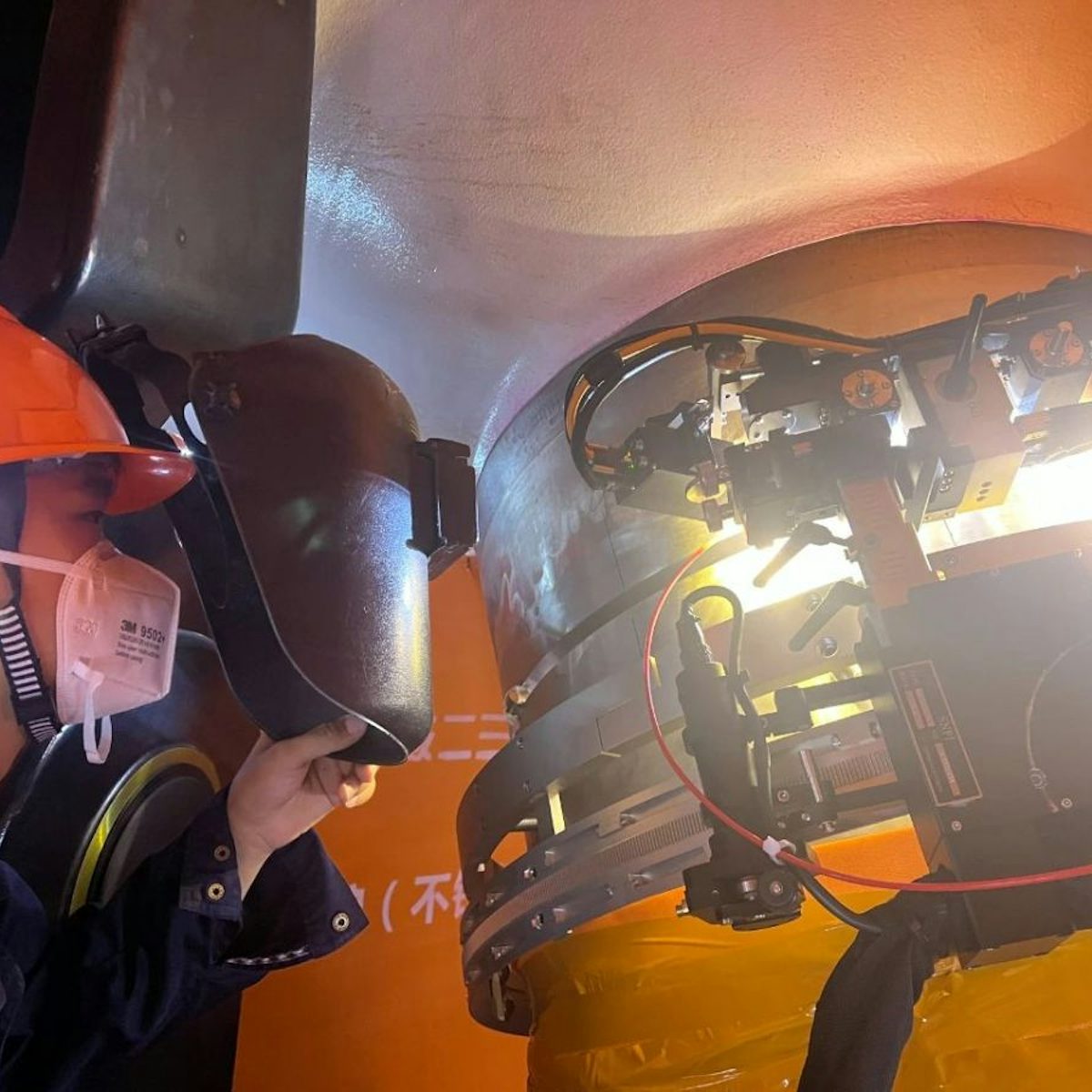 www.nucnet.org
www.nucnet.org
The welding of the main circulation pipeline has started for Unit 2 of the Sanaocun nuclear power station in the eastern Chinese province of Zhejiang, according to the China Nuclear Energy Association (CNEA). Sanaocun, also known as Zhejiang Sanao (San'ao), has two domestic 1,117-MW Hualong One units under construction – Sanaocun-1 since December 2020 and Sanaocun-2 a year later. The pipeline connects the reactor pressure vessel with the steam generators and the reactor coolant pumps and its welding is usually seen as a milestone development for nuclear new-build projects. The Hualong One, or HPR1000, is an indigenous pressurised water reactor unit that incorporates elements of CNNC’s ACP1000 and China General Nuclear’s ACPR1000+ reactor designs. China has 14 Hualong One units under construction domestically at eight sites – one unit each at Ningde, Shidaowan and Fangchenggang; two units each at Changjiang, Lufeng, Taipingling, Sanaocun and Jinqimen; and three units at Zhangzhou. The country has the most rapidly expanding nuclear fleet in the world, according to data by the International Atomic Energy Agency.
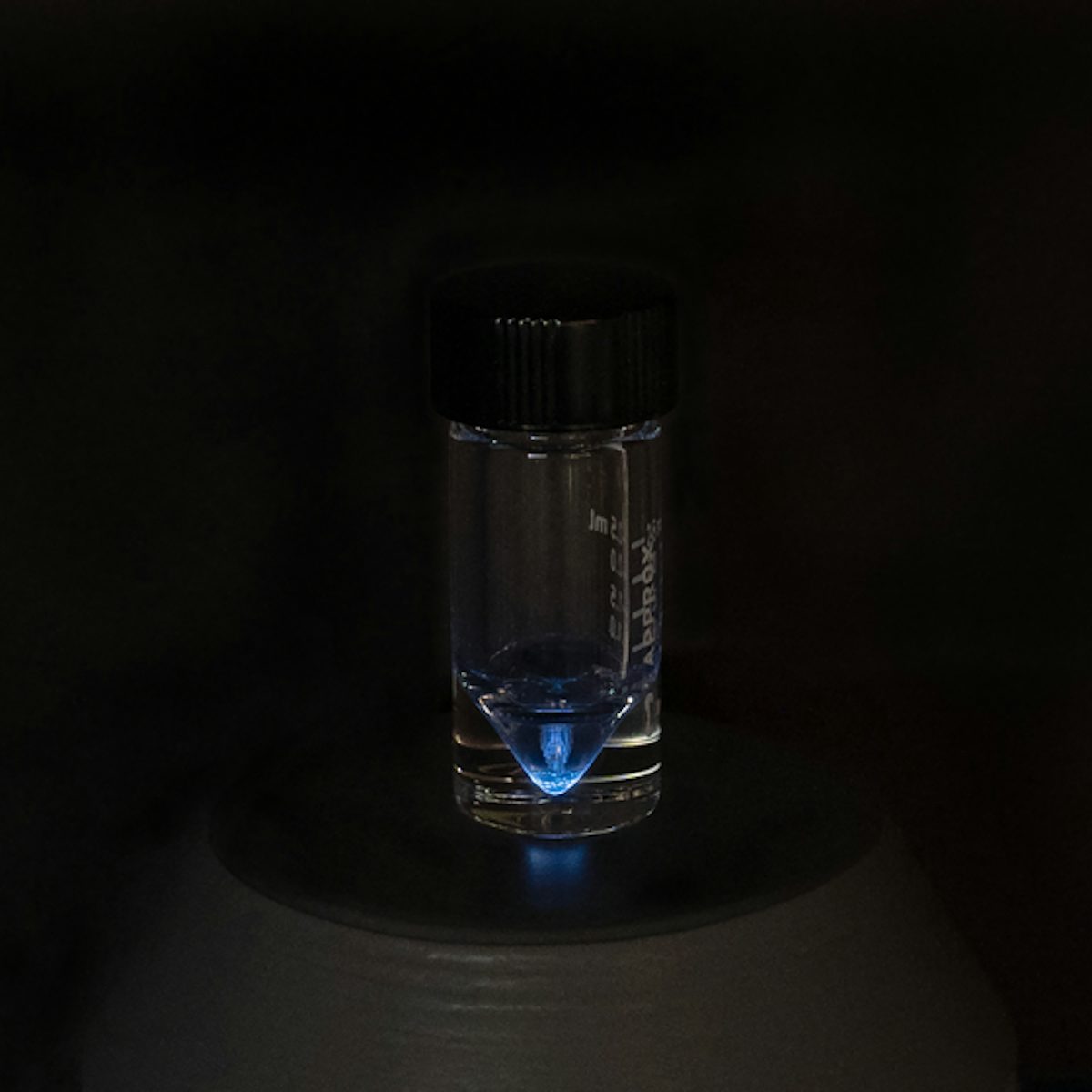 www.nucnet.org
www.nucnet.org
Belgium-based PanTera has secured €93m in an oversubscribed early-stage funding round to accelerate the large-scale production of actinium-225 (Ac-225) a promising radioisotope for emerging cancer treatments. The company said the latest A Series funding round, led by global health investor EQT Life Sciences, brings the total funds raised by PanTera to €134m, including equity contributions and debt financing. PanTera said the funding round marks the largest in Belgium’s life sciences sector to date. PanTera was set up in September 2022 as a joint venture between Belgium’s nuclear research centre SCK CEN and IBN (Ion Beam Applications) with the mission to commercialise the production of Ac-225 from radium-226 (Ra-226) with the use of accelerator technology. Belgium has radium reserves dating back to the beginning of the 20th century when the country was a pioneer of radiochemical research. Ac-225 is a promising alpha emitter for use in targeted alpha therapy. It has the potential to target solid tumors, metastases, and systemic cancers such as leukemia. The company’s production method transforms Ra-226 into Ra-225, which then decays into Ac-225. This process will enable PanTera to produce over 100 Curies of clinical-grade Ac-225. annually by 2029, enough to treat more than 100,000 cancer patients each year. PanTera said it is already providing early supplies of Ac-225 through a collaboration with TerraPower Isotopes and expects to produce 1.5-2 Curies annually starting in 2025. Current global supply stands at just 3 Curies per year, PanTera said and added it has already secured agreements with several pharmaceutical companies, including Bayer, to fulfil more than 80% of its production capacity before commercial operations begin.
 www.nucnet.org
www.nucnet.org
According to the International Atomic Energy Agency (IAEA), more than two-thirds of the world’s 442 nuclear power reactors are now over 30 years old and approaching or already surpassing the end of their originally anticipated 40-year lifespan. Around 100 of those reactors globally have already had their operating licences extended. The IAEA also projects that, unless more operating licences are extended, existing nuclear capacity will decline sharply before 2030, particularly in Europe and North America, with all existing plants scheduled to retire by 2060. Set against the background of an electricity generation sector that faces the immense challenge of shifting almost entirely from fossil fuels to low carbon energy sources by 2050, extending the lifespan of nuclear power generation plants, as we have seen with EDF’s Hartlepool and Heysham 1 plants, could provide an effective route to help meet the UK’s future low emissions energy goals. In this article, Andrew Buckley – Technical Manager, ABS Consulting Ltd. (UK Office) looks at the modelling and simulation processes required to support nuclear risk assessments from a Finite Element Analysis (FEA) and seismic walkdown perspective. With over 25 years' experience working for engineering consultancies, Andrew specialises in FEA and extreme load simulation for a variety of nuclear clients across the country. He has spent much of his career analysing and assessing non-linear problems and projects under normal operating and extreme loading conditions. This expertise has made him a highly sought-after specialist when considering dynamic loadings such as seismic, impact, and blast for structures and buildings. While Andrew primarily uses ABAQUS for his analysis, he also has experience with ANSYS, LS-DYNA, and other software packages. Although nuclear plants themselves do not have a set-in-stone lifespan, their components do. To continue to run a plant beyond the design mark that every nuclear facility was built with, you should make a case that nothing has deteriorated that could cause problems if left unaddressed. A recent example of this is EDF Energy extending the operating life of its Hartlepool and Heysham 1 nuclear plants by two years to March 2026, having originally been due to end generation in 2014. To achieve their objectives, EDF needed the justification to state their extension case to the Office for Nuclear Regulation (ONR) in the shape of proof that the plants can safely achieve what they want them to. It is important to also state that the lifetime extension justification process equally applies to any organisation with a nuclear licence, not purely power generation plants. Stating the Case For Lifetime Extension There are clear arguments for lifetime extensions within the UK’s existing nuclear plants. Compared with a nuclear new build, lifetime extension projects can be far less capital intensive, with significantly shorter construction times, better cost controls and less construction delays. So, it makes sense to state the case for their lifespan extension, particularly against emission reductions targets. But lifetime extensions should look way beyond the graphite core itself and its behaviour. Every aspect of a nuclear plant’s operation should be assessed and proven to remain capable of safe operation. The case for lifetime extension focuses on the operator evidencing that they have identified and are safely managing any ageing effects in systems, structures, and components. Further, it should confirm that the operational, structural and environmental parameters, conditions have deteriorated and that risks to individuals and the environment have not increased. Safety sits at the heart of any lifetime extension plan and within their Safety Case, operators should consider any new or escalated levels of risk, hazard, or standards that have been introduced. It is also important to consider that the Safety Case will be constantly evolving as equipment is replaced after reaching the end of its life. So, what should nuclear plant operators be looking at when they are considering the evidential case for extending the lifespan of their nuclear operations? The Role of Modelling, Simulation and Seismic Walkdowns to Support Nuclear Risk Assessments Finite Element Analysis By using FEA, we can study the behaviour of structures, plants and equipment when subjected to both normal operating (day-to-day) and design loadings and extreme hazards such as seismic, weather impact and blast loads. These include linear and non-linear approaches and analysis methodologies. Seismic Walkdown Seismic walkdowns are also invaluable in this process, providing a real time review of the facility, its infrastructure and the plant and equipment in its current condition and location. This is important as it can take account of any variations from concept, design or installation drawings or references and assesses the true condition, including material degradation and damage. Additionally, the seismic walkdown review enables the identification and consideration of potential interactions with adjacent plants and equipment that could occur during seismic events, which might not be considered by a desktop-based assessment. Both processes can be used to look at: New Installations Operators should provide detailed design analysis and assessments for any new structures, cranes or plant and equipment. It is important to demonstrate that existing structures and plants have been assessed for the potential impact of new hazards or loadings that could impact the safety case. Operators should therefore consider: - Seismic and condition walkdown surveys. - Structural assessment and substantiation against static and dynamic load cases, including blast, seismic and other natural hazards, such as climate change impacts. - Design of structural elements, connections and retrofit solutions to mitigate structural vulnerabilities. - Production of engineering substantiation calculations with technical specifications and drawings. - The impact of new installations with respect to existing structures, plant and equipment. - Independent Technical Assessment (ITA). Mechanical Plant and Equipment Assessments New and existing plant and equipment should be assessed against normal operations or extreme load cases as part of engineering substantiation. Review areas include: Featured Services: - Facility Walkdown Assessments. - Engineering Calculations to Substantiate Equipment and Support Systems. - Design of Retrofit Solutions Packages. - Stress and Fatigue Analysis of Pipe Systems. - Analysis of Pressurized Systems. - Analysis of Electrical Supplies. - Equipment Qualification utilising the Seismic Qualification Utility Group (SQUG) Generic Implementation Procedure (GIP). Crane Analysis and Design Review Operators should understand the potential vulnerabilities associated with their cranes by quantifying associated risks, reducing potential safety and operational impacts. By considering variances in loading conditions, a detailed analysis can take place to understand the integrity of the structure. Review areas include: Featured Services: - Structural / Mechanical Stress Analysis. - Seismic Assessment with Coupled Structural Assessment. - Dynamic Loading. - Structural Plastic Deformation. - Fatigue and Stress Condition Analysis. - Design Review Against International Codes of Practice. Conclusion Stating the Safety Case for extending the lifespan of a nuclear facility involves multiple complex processes involving every operational aspect of a plant. For those looking to extend the lifetime expectancy of a plant, having a clear, thought through plan utilising FEA and Seismic Walkdown methodologies, can be greatly beneficial.
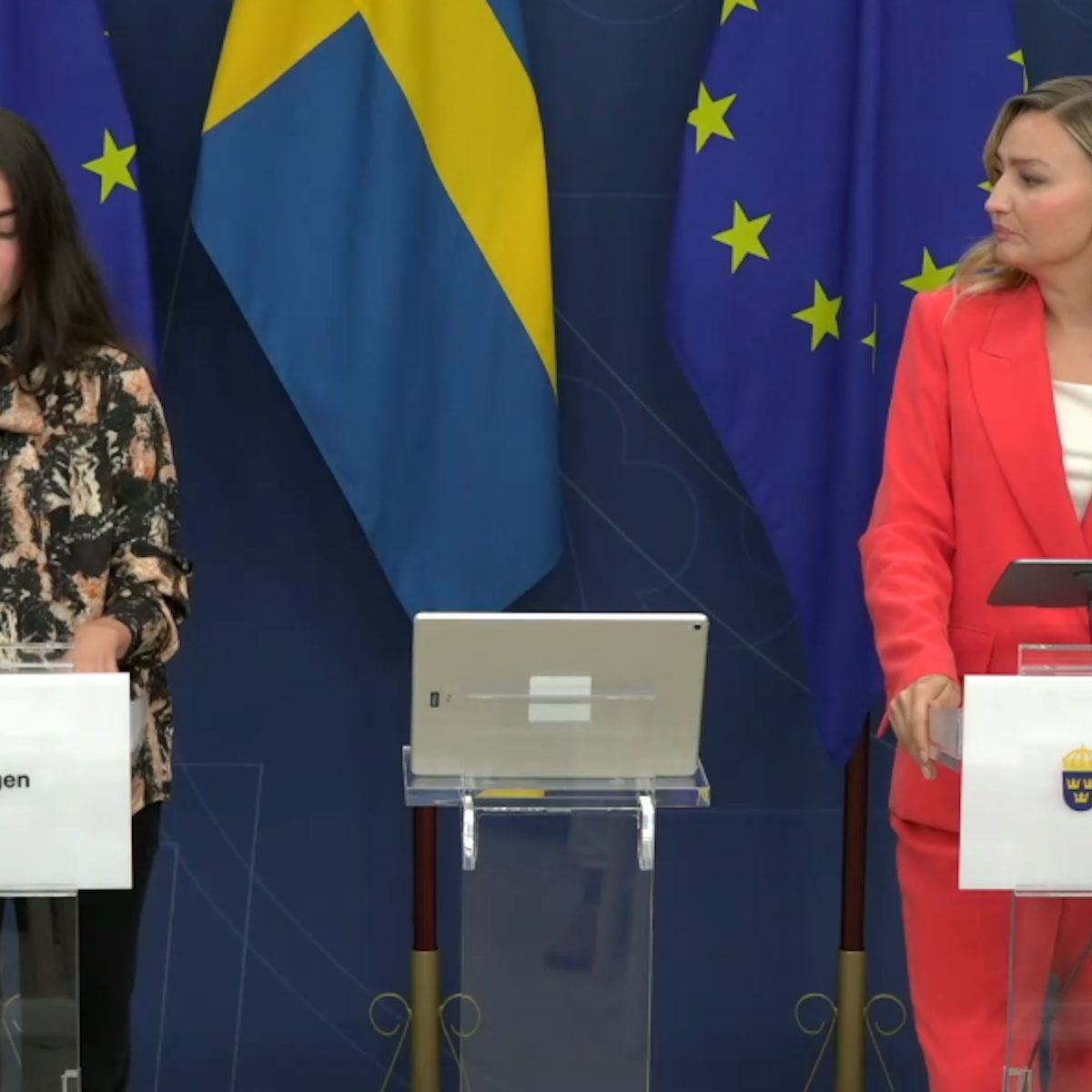 www.nucnet.org
www.nucnet.org
The Swedish government has announced it intends to invest over SEK1bn (€88m, $97m) in 2025 to expand fossil-free electricity production including plans for an investment of more than $9m in pilot and demonstration nuclear power projects. The government said in a statement that in the budget bill for 2025, it is proposing “a series of investments to secure an increased and secure energy supply, which is a prerequisite for climate change”. The statement said new nuclear power is needed to meet future electricity needs and to increase supply security in the electricity system. It said: “The government’s work to enable the expansion of new nuclear power is now entering a more intensive phase.” The statement said the investments required will largely be made with existing nuclear technology, but “new innovative solutions will also be required both within individual technologies and at the system level”. The government also said it will streamline the permitting process for new reactors and is increasing an Environmental Protection Agency grant with an additional SEK2.5m (€219,500, $240,800) in 2025 so the agency can provide guidance. In 2026 the grant is estimated to increase by SEK2.5m and in 2027 by SEK1.5m. The government also said “additional work” will be required to strengthen the conditions for new nuclear power and it is allocating SEK30m (€2.6m $2.8m) in 2025 for this purpose. It estimated that SEK35m will be set aside in 2026 and SEK25m in 2027. ‘Urgently Working On Financing Model’ Financial markets minister Niklas Wykman said “now we are urgently working on the financing model for new nuclear power”. He said nuclear power is an important part of securing Swedish growth in the future, not least because it can be planned. Mattias Johansson, secretary of the Sweden Democrats party, the largest member of Sweden’s right-wing governing bloc, said the government and the Sweden Democrats have already taken a series of decisive measures to improve the conditions for new nuclear power, and now further steps are being taken. “It is absolutely necessary to meet the electricity needs of the future and to increase the security of supply in the electricity system,” he said. “There is also a renaissance going on in nuclear power with several new exciting technologies, where Sweden will now also be able to participate and lead the development by developing new technology in the field.” The government said it intends to submit the proposals to parliament as part of its budget bill for 2025. Background: Stockholm’s Ambitious Nuclear Plans The current government, which took office last year, has taken a number of measures to remove barriers and create better conditions for new nuclear power. Late last year Sweden’s parliament approved a bill allowing more nuclear reactors to be built than planned, scrapping the previous cap of 10. New laws will also allow construction of nuclear reactors at sites other than existing ones. Parliament also established a new energy policy goal of a completely fossil-free electricity system by 2040, which includes nuclear power. The government is calling for new nuclear power with a total output corresponding to at least two large-scale reactors to be in place by 2035. By 2045 it wants a further expansion that could correspond to at least 10 new large-scale reactors. It appointed a national coordinator for the expansion of nuclear power who called on Stockholm to establish an organisation that can oversee its ambitious plans for the deployment of large-scale nuclear reactors and small modular reactors. Carl Berglof said the new organisation would manage activities and resources common to several nuclear power projects. A government commission said recently that Sweden’s plans for a rapid expansion of its nuclear power capacity are likely to cost around 400 billion crowns ($38bn, €34bn) and should be financed by a mix of government loans and price guarantees. Sweden-based power company Vattenfall announced earlier this year that it had shortlisted Rolls-Royce SMR and GE Hitachi’s BWRX-300 SMR designs in an ongoing evaluation to potentially deploy new reactors at its existing Ringhals nuclear site in southwest Sweden. Sweden’s six existing nuclear plants are at three sites: Forsmark, Oskarshamn and Ringhals. According to International Atomic Energy Agency data, nuclear energy provided 28.6% of the country’s electricity generation in 2023.
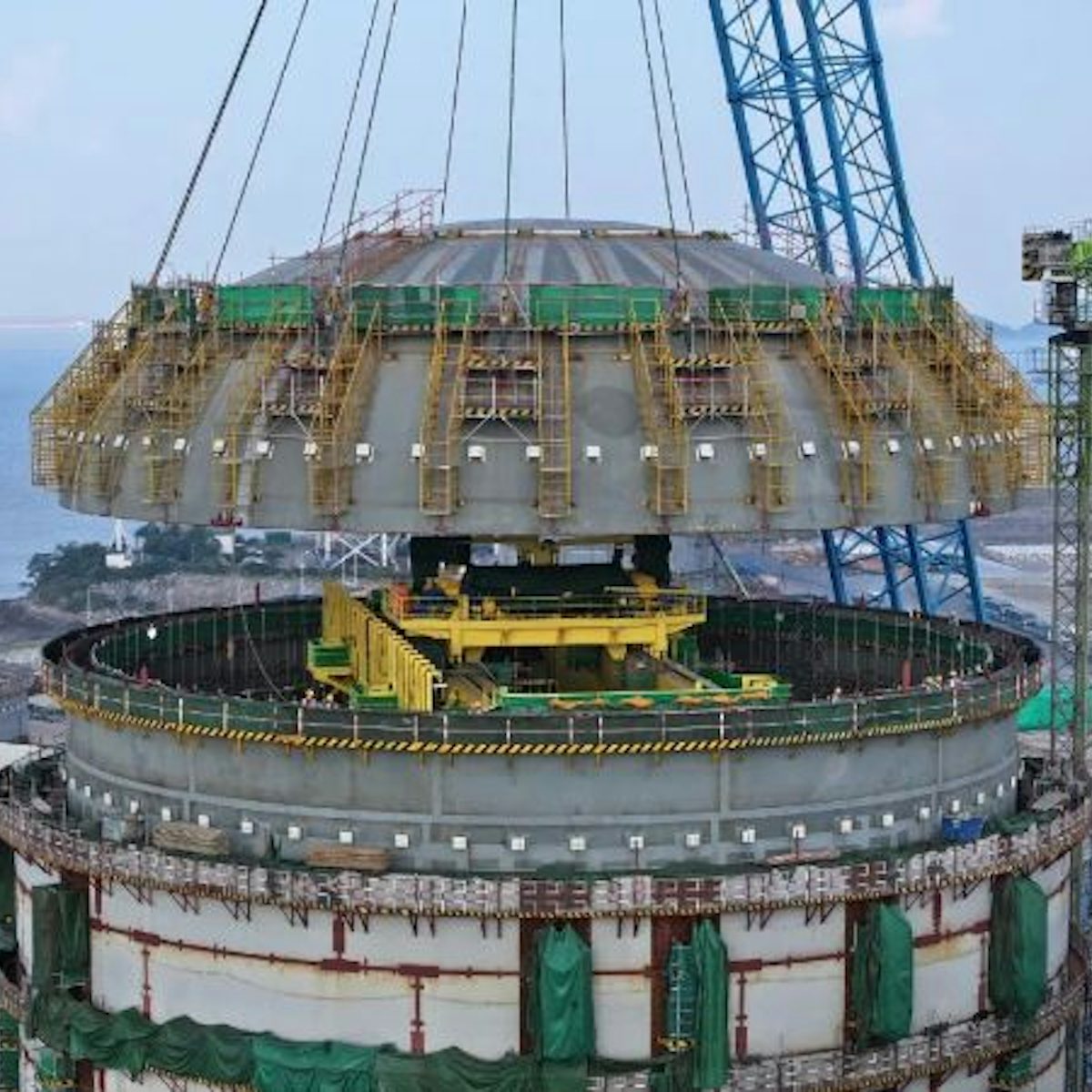 www.nucnet.org
www.nucnet.org
The inner steel containment dome has been hoisted into place for at Unit 3 of the Sanmen nuclear power station in Zhejiang province, eastern China. Developer China National Nuclear Corporation (CNNC) said the move means that civil construction of the main internal structure of the containment building of Unit 3 “has been basically completed”. The dome, a steel component that weighs about 788 tonnes, was installed on 6 September, CNNC said. Workers can now begin installing the main equipment for the unit’s nuclear island, the company said. Sanmen-3 is the first CAP1000 nuclear plant under construction in China. The CAP1000 is China’s version of the Westinghouse AP1000 Generation III+ pressurised water reactor design. First concrete was poured for Sanmen-3 in June 2022. In March 2023, first concrete was poured for the nuclear island of twin Sanmen-4. The Sanmen station already has two commercially operational Westinghouse AP1000 units since 2018 – Sanmen-1 and Sanmen-2. China has 30 commercial nuclear power units currently under various stages of construction.
 www.nucnet.org
www.nucnet.org
The PIME 2024 (Public Materials Information Exchange) nuclear communications conference is returning on 14 and 15 October 2024 after a five-year hiatus, organisers the European Nuclear Society (ENS) have announced. The conference will take place in Aix-en-Provence, France, and will feature an exclusive technical tour of the International Thermonuclear Experimental Reactor (Iter) nuclear fusion site in Cadarache. The 2024 edition will focus on the evolving landscape of nuclear energy communication in the context of urgent global challenges, including climate change, growing energy demand, Europe’s power supply security and innovation. The event will bring together nuclear communication professionals to discuss the latest trends, challenges and best practices in nuclear energy communication. It will feature presentations, workshops and networking opportunities, culminating with the Iter site visit on the afternoon of 15 October. Insights Into Strategies At Iter The conference will begin with a session offering insights into how Iter is adapting its communication strategies to effectively convey the complexities and potential of fusion energy. The focus will be on the approaches taken by Iter’s communication team to engage diverse audiences. Another session will focus on how media perceptions, political dynamics and public attitudes towards nuclear power have evolved since 2022. Experts, including Bloomberg reporter Jonathan Tirone and Jessica Johnson, director of communications and advocacy at the Brussels-based industry group nucleareurope, will discuss changes in narratives and communication models, offering ways for communicators to navigate the increasingly complex nuclear power and technology landscape. A third and final session will look at how the media and the public influence and interact with each other. Experts from the University of Antwerp and Imperial College London will bring insights from social sciences and their findings on public responses to energy system change, climate change risks, emerging technologies, and psychosocial approaches to energy use in everyday life. Workshops will cover topics including shaping nuclear communication in the future, small and advanced modular reactors, the relationship between human resources and nuclear communications, local stakeholder engagement and closing the significant gender gap in public support for nuclear power. Before the 2020 Covid-19 pandemic, PIME was a regular event specifically designed for professionals involved in nuclear communication. The last PIME was held in Paris in June 2019. A Platform For Ideas And Collaboration Organisers ENS are reviving the conference in the light of significant changes in the global outlook for nuclear power since 2019. Many countries in Europe and beyond are planning to deploy nuclear reactors over the next decade while the promise of innovative small modular reactors draws closer. “We’ve noticed that many communicators in our network are feeling the shifts in their environment and are adapting their strategies,” said Kirsten Epskamp, secretary-general of ENS. These developments require a fresh look at how communication strategies may need to evolve to meet the changing global industrial, political and social environment around nuclear power. "As a response to this growing need, ENS decided to bring back PIME as a valuable service to the nuclear community, creating a platform for exchanging ideas and enabling collaboration," Epskamp said. For a detailed programme and registration follow the PIME event’s official website.
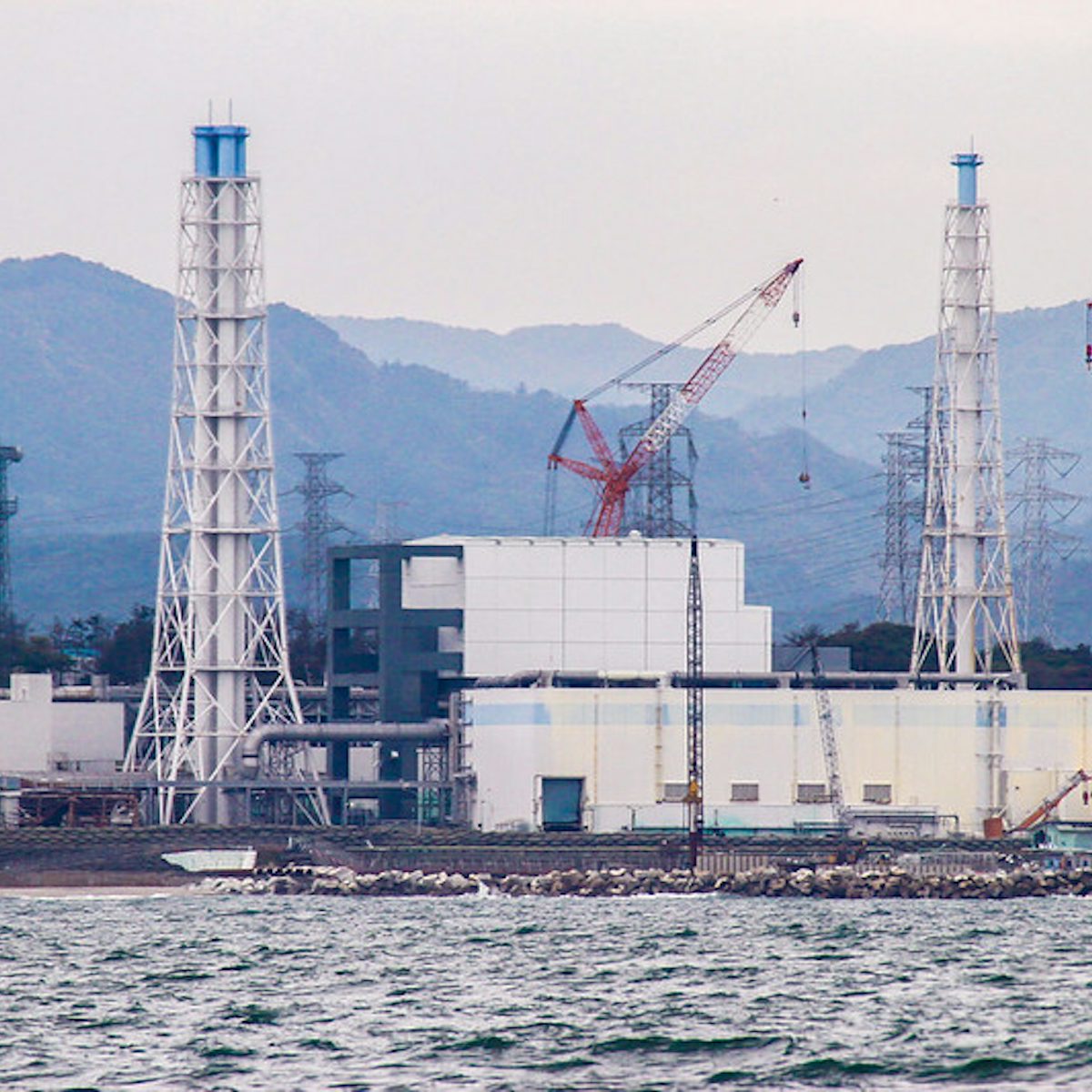 www.nucnet.org
www.nucnet.org
An operation to remove a small amount of radioactive debris from Unit 2 at Japan’s Fukushima-Daiichi nuclear station has begun, after technical issues led to the cancellation of an earlier attempt. Tokyo Electric Power Company (Tepco) said in a statement on Tuesday (10 September) that its “pilot extraction operation” had started. It will take about two weeks, according to the company. Tepco is aiming to retrieve just three grams of fuel mixed with other debris as part of a demonstration programme for the unprecedented cleanup, which reports have said is expected to take decades and cost 23 trillion yen ($161bn, €145bn). The tiny sample will be studied for clues about conditions inside the reactors – a crucial step towards decommissioning Fukushima-Daiichi. Unit 2 was one of three of six plants at the facility that melted down after a magnitude 9.0 quake and tsunami in March 2011 destroyed the station’s power supply and cooling systems. Removal of the fuel debris has proved challenging, requiring the development of a telescopic device equipped with a gripper tool. The device can extend up to 22 meters and access the debris through a penetration point into the primary containment vessel. Tepco originally planned to start its first trial removal on 22 August, but had to stop the work at a preliminary stage after detecting a problem involving the installation of the necessary equipment. About 880 tonnes of fuel debris remain in the three reactors that suffered meltdown, according to estimates by the International Research Institute for Nuclear Decommissioning. Tepco said that in Units 1, 2 and 3, the fuel and the metal cladding that forms the outer jacket of the fuel rods melted, then re-solidified as fuel debris. “Fuel debris” refers to this melted fuel and other substances after they cooled and re-solidified. At the time of the accident, Units 1 to 3 were operating and had fuel rods loaded in the reactors. After the accident, the loss of emergency power prevented further cooling of the cores, resulting in overheating and melting of the fuel. Tepco has been surveying the inside of the Unit 2 containment vessel before retrieval of the fuel debris can begin. In Unit 2, Tepco believes there is a large amount of fuel debris in the bottom of the reactor pressure vessel, but little in the surrounding containment vessel.
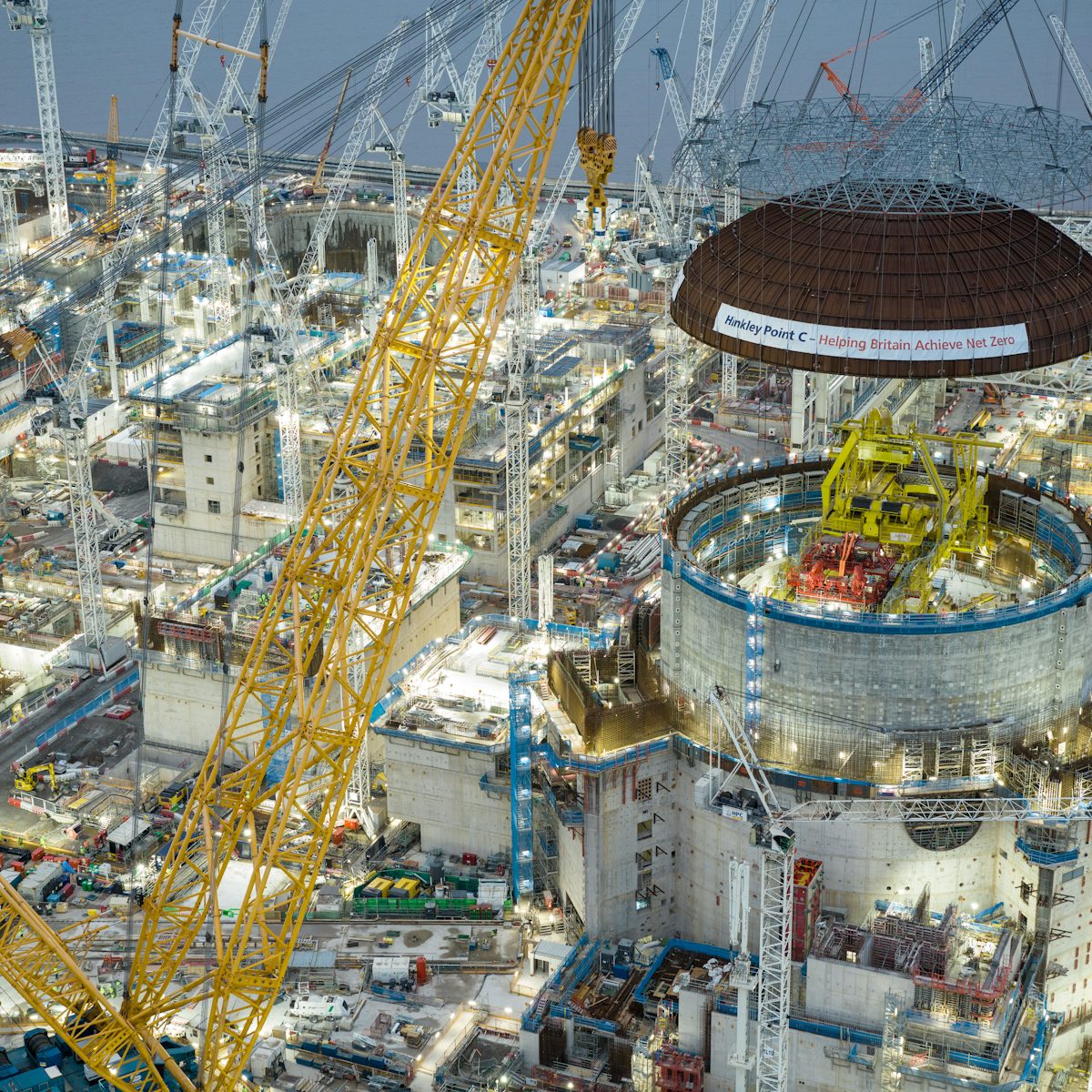 www.nucnet.org
www.nucnet.org
The number of people working in the civil nuclear industry in the UK is at its highest level ever with major new projects helping to drive a 60% increase in the number of jobs in a decade, according to a new report by the Nuclear Industry Association (NIA). The NIA’s 2024 Jobs Map – the sector’s major annual jobs report – shows there are 86,908 people working in the sector, an increase of over 9,000 on last year’s total, and up from 54,515 in 2014. The record growth is driven by new projects at Hinkley Point C and Sizewell C, although the NIA said “urgent decisions “are needed on the next wave of projects to keep up momentum and sustain growth. The construction of two France-supplied EPR units at Hinkley Point C has tripled the size of the nuclear workforce in the southwest of the country, from 8,500 workers in 2014 to over 27,000 today. The project has also brought £5.3bn (€6.2bn, $6.9bn) of investment into the region, with the benefits soon to be replicated by the construction of two more EPR units at Sizewell C in Suffolk, southeastern England. By contrast, Wales, home to the Wylfa nuclear site, has seen the steepest decline in jobs across the UK, down 40% in the last decade, despite having the best site for new nuclear anywhere in Europe. A new large-scale nuclear power station at Wylfa, on the island of Anglesey, could create thousands of jobs and bring in billions of pounds in investment. Elsewhere in the UK, innovations in advanced nuclear technology have helped drive the number of jobs, with a growing workforce of over 700 people developing small modular reactors. SMR deployment could create thousands of jobs. The NIA said the nuclear industry provides a vital engine of economic development outside London and the southeast, with over 29,000 people employed in the North West in decommissioning, fuel cycle research and reactor design, and remains the sector’s biggest regional workforce. Elsewhere, the UK’s “world-class” nuclear fusion research expertise sees more than 2,700 people employed at the Culham Centre for Fusion Energy in Oxfordshire, the NIA said. The UK has nine commercial nuclear power plants in operation at five generating nuclear power stations, providing around 15% of the country’s electricity. Four units at Hartlepool and Heysham are scheduled to retire by March 2026, followed by four more units at Heysham B and Torness by March 2028. That will leave only Sizewell B in operation from the current fleet. Hinkley Point C, the only new nuclear power station under construction in the UK, is due to begin generating in 2031.
Japan's approach for recycling and disposing of soil and radioactive waste from decontamination activities after the 2011 Fukushima Daiichi Nuclear Power Station (FDNPS) accident as currently planned is consistent with IAEA Safety Standards, an International Atomic Energy Agency (IAEA) report released today says. The findings, presented by the IAEA to Japan’s Minister of the Environment Shintaro Ito today, were the result of a sixteen-month safety review. The IAEA assessed the approach of the Ministry of Environment Japan (MOEJ) to date for the managed recycling and the final disposal of removed soil and radioactive waste against the IAEA Safety Standards. These safety standards serve as a global reference for protecting people and the environment and contribute to a harmonized high level of safety worldwide. “We appreciate the enormity of the challenge facing Japan in dealing with the aftermath of the 2011 FDNPS accident and we commend the country for requesting our impartial and technical review of its plans,” said IAEA Director General Rafael Mariano Grossi. “The recycling and disposal of the soil further contributes to the reconstruction of areas affected by the accident.” About 13 million cubic meters of soil and about 300,000 cubic meters of ash from incineration of organic material was removed as part of decontamination activities in Fukushima Prefecture and stored at an Interim Storage Facility (ISF) covering an area of 16 square kilometres, spanning across the Okuma Town and Futaba Town. The management of removed soil—enough to fill 11 Tokyo Domes—is governed by a Japanese law which permits the government to repurpose the soil both within and outside of Fukushima Prefecture and for final disposal of the remaining soil to take place outside of the Fukushima Prefecture by 2045. Japan plans to recycle roughly 75% of the removed soil – the soil which has low levels of radioactivity – by using it, if demonstrated safe, for civil engineering structures including embankments for roads, railways, seawalls, waste treatment sites, coastal protection, agricultural land, and land reclamation. The remaining soil which cannot be recycled will be disposed of permanently and Japan intends to confirm the site selection and disposal process in 2025. "The IAEA is confident that as the Ministry of the Environment (MOEJ) continues to explore solutions in line with our recommendations, its evolving strategy for recycling and final disposal of removed soil and waste will remain consistent with IAEA Safety Standards," said Director General Grossi. In response to Japan’s request in October 2022 for a safety review, an IAEA team – comprised of five IAEA staff and six international experts from Belgium, Germany, Japan, the UK, and the US - conducted three international expert missions in May 2023, October 2023 and February 2024. The IAEA’s review included providing advice and support to Japan from both technical, including safety aspects, and social viewpoints. The team of experts recognised the many technical and social challenges facing the MOEJ if it is to implement the managed recycling of removed soil and secure final disposal outside Fukushima Prefecture by 2045. “The IAEA found the MOEJ's proactive approach to managing removed soil and waste arising from decontamination activities reflects a commitment to ensuring safety, protecting public health and promoting environmental sustainability in Fukushima Prefecture and beyond,” said Director General Grossi. “The IAEA is committed to engaging with Japan on the managed recycling and the final disposal of removed soil and waste through future follow-up assessments of the MOEJ's approach.”
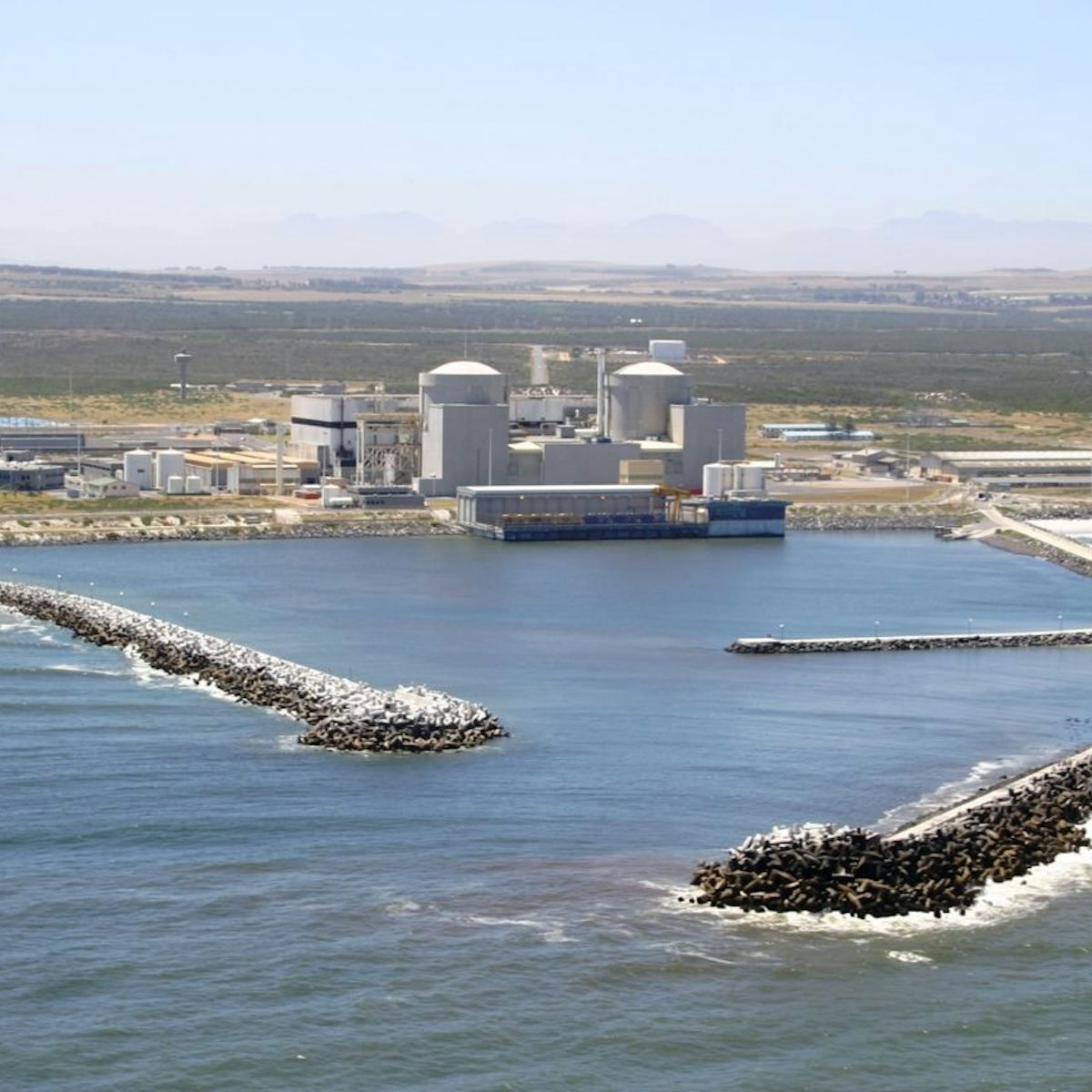 www.nucnet.org
www.nucnet.org
The operator of South Africa’s Koberg nuclear power station needs to continue its work to ensure that programmes supporting long-term operation (LTO) are fully implemented for the LTO period and that the containment monitoring system is fully refurbished and remains fully functional, an International Atomic Energy Agency team has said. The recommendations follow a Safety Aspects of Long-Term Operation (Salto) team follow-up review mission to the two-unit facility near Cape Town requested by the operator Eskom. Koeberg-1 and -2 started commercial operation in 1984 and 1985 respectively. Unit 1 received a licence to continue operating until 2044 in July this year and Eskom is planning to extend operation of Unit 2 until 2045. During the 3 to 6 September mission, the Salto team’s review focused on aspects essential to the safe LTO of both units. The mission reviewed Koeberg’s response to recommendations and suggestions made during a Salto mission in 2022, which built upon an initial IAEA pre-Salto mission in 2019. “The team observed that the plant is addressing the Salto team’s suggestions and recommendations from the 2022 review,” said team leader and IAEA nuclear safety officer Bryce Lehman. “Based on its efforts, the plant has made significant improvements in ageing management and resolved most of the issues identified in 2022. The plant is on track to complete the remaining items in a reasonable timeframe.” The Salto team said Eskom had updated the LTO programme ensuring that all LTO activities are systematically planned, executed on schedule and aligned with safety and operational standards. The Koeberg nuclear power station, 30 km north of Cape Town, provides around 5% of the country’s electricity and plays a vital role in reducing reliance on coal, the IAEA said. It is the only commercially operating nuclear power station on the African continent. The IAEA said Koeberg has two pressurised water reactors with a combined capacity of 1,934 MW, making it a key component of South Africa’s energy infrastructure. South Africa’s energy minister said recently that the procurement process for planned new nuclear in South Africa could be delayed by up to six months to allow for more consultation following legal challenges.
A robust supply chain is needed to enable new reactors to be built on time, on budget and at the scale needed to meet decarbonisation goals - and major players in the nuclear engineering, procurement and construction (EPC) sector shared some of the experiences and lessons learned from projects both nuclear and non-nuclear at World Nuclear Symposium 2024. Bechtel took over construction of the Vogtle new-build projects in the USA in 2017. More recently, the company has a contract with Westinghouse to build three AP1000 units in Poland, which, as well as addressing national energy security and climate goals, provides an opportunity to train thousands of professionals and workers in nuclear work and help to establish a supply that can be utilised and replicated in future AP1000 projects, Ahmet Topkinar, general manager of Bechtel’s Nuclear Power business line, said. Innovation and standardisation are key factors for improving schedule time, values and cost services, he said. Being involved from the very start of a project - which, unlike the Vogtle project, is the case for Bechtel at Terra Power's Natrium construction project at Kemmerer, Wyoming, means that design engineers can check for "constructability", and this minimises the need to rework aspects of the project, which in turn saves time and money. Tokpinar also spoke of the value of an integrated EPC approach, a lesson learned from Bechtel's non-nuclear projects. "What we do on our non-nuclear projects, which we are implementing now on our nuclear projects, is a totally integrated digital delivery platform," he said. "And what I mean by that is you create a common data environment where all the data resides. You have all your other programmes and tools that connect, read back and forth, whether it's your construction material, tracking tools, your engineering design tools, your procurement system, they are all connected to this single source of data." As well as minimising the errors from "chasing paper", this approach makes it much easier to visualise and plan construction activities. Doing this advance work packaging before mobilising at the site saves time, he added. The company is aiming for a completely paperless, digital workflow to improve productivity. "We think this is going to be a game changer, a paradigm shift in the nuclear industry," he said. But there are two challenges that are holding back the development of a repeatable nuclear supply chain, Tokpinar said. "One is funding - and the firm commitments from governments and customers alike to identify the pipeline of projects. There has to be some consolidation from customers around picking winners," he said. "The second is standard design … a point where we have a standard design that is licensable under at least certain jurisdictions, that can be truly replicated, then we will achieve the nth-of-a-kind benefits of using the same supply chain, same design, rolling crews and professionals from one project to another. It's not rocket science." "I think we do a very good job as an industry advocating for nuclear. But now we need to take responsibility to deliver it with success," Tokpinar said. Time is money Stéphane Aubarbier, deputy CEO at Assystem, also felt that a broader use of digital tools could be a game-changer for nuclear projects. Finance - or more specifically the cost of finance for nuclear projects - is a key consideration, said. This is especially so for newcomer countries to nuclear. "It is not that they don't find money: it is that they find money at too expensive a cost," he said. Improving project timelines will help to decrease the cost of financing, he said. "So if we have a material design phase that is very short, we have less rework during the construction, and then we can hope that the construction phase will be shorter than expected," and not overrun, he said. But even more important is improving methods of construction, and here digital tools will be a game-changer, he said. Nuclear is a document-based industry, so transitioning from being document-oriented to being data-oriented will require a change in mindset, but will be the main way to shorten nuclear power plant construction times. This will also decrease the risk profile of the industry, and decrease the cost of finance, he said. "As soon as we do that, we would see the cost of funding decreasing, it would be more affordable and then it will take pave the way for many more countries to step into nuclear programmes," Aubarbier said. Business model The four-unit Akkuyu plant, currently under construction, is Turkey's the first nuclear power plant and the first anywhere to be built under a build-own-operate model, with Russian atomic company Rosatom responsible for construction, operation, commissioning and personnel training. Esra Songur, advisor to the deputy CEO of Akkuyu Nuclear JSC, told the panel that this approach offers strong project management through alignment with Rosatom's established management infrastructure. "The model has significantly impacted the implementation of our project," she said. "This gives to us some challenge because this is the long term responsibility, and a key lesson learned from the project is that communication stakeholder management is crucial," Songur said. "We will be an integral (part) of this community for 60 years or more. The supply chain is another important subject for us: we have 400 companies, customers, of which most of them are local," she said. The local supply chain is crucial for to manage the project efficiently: "So our first priority and and key lessons will be is stakeholder management." Being ready Asked what lessons Framatome has learned from recent projects - and what needs to be done to ensure the supply chain is able to support the construction of many new reactors, Framatome CEO Bernard Fontana had a very simple answer. "First, be ready," he said. This means investing in developing the workforce with the skills and expertise necessary for nuclear projects - which Framatome has doing via skills academies. The company has been investing in its industrial capabilities too, to enable it to produce a flow of components such as steam generators, and making acquisitions to assure its supply chain for components such as pumps and turbine technology. Asked what his key takeaways for the audience would be, Fontana named his three "obsessions" of safety, quality, and lead time. "And this also relies on the engagement of the teams - suppliers, contractors, customers... So let's mobilise our team in the one team spirit."
There is an increasing willingness to consider investing in new nuclear projects - but issues remain around the lengthy investment timelines and perceived regulatory risks, a panel at World Nuclear Symposium heard. The panel Capitalising on Interest - Mobilising finance to accelerate deployment, heard from Vicki Kalb, Global Head of ESG and Sustainability Research at UBS, that until recently "we would not have been able to have a conversation with investors about nuclear ... literally we would have been laughed out of the room and that was particularly true of the ESG investor community. But that radically changed a couple of years ago." She said that the concerns people had with nuclear investment - issues such as waste or the long-term investment danger - issues which stopped them from engaging with nuclear investments changed in 2022 with events in Ukraine and the European Union's inclusion of nuclear in its green taxonomy, with the energy security case growing since then, as well as the "dawning realisation" of the scale of electricity demand growth required - "on steroids" this year as a result of the requirements of data centres and artificial intelligence "which really focused investor attention on that problem". "In the past it was very common for institutional investor to have an exclusionary policy around nuclear energy - that has definitely changed," she added. Seb Henbest, Group Head of Climate Transition, HSBC, said that all international banks had net-zero targets and were positioned to support transition and although there were differences "there's a clear recognition that there's a role". He said that there were traditional concerns about safety, environment and proliferation issues, but, as with financing any other large-scale energy infrastructure, the banking teams are wanting to see "really strong offtake partners, public or private, solid credit ratings". He said cost and timeline overruns add to the capital costs so "the appetite might be there, but to get capital to flow" it was important to instill confidence "that these are good projects that won't burn us, that we can manage and distribute that debt over time". He said that nuclear's recognised role in meeting net-zero meant the reputational risk of nuclear projects was much lower than it had been in the past, but regulatory risks remained - "long projects, long lifetimes, long commitments, today it looks great, but what about tomorrow?". Kalb added that when they speak to investors they want to know about their returns profile "on the investment, so much of it comes down to the length of time it's outside the typical institutional investor's window - 'and these projects just are taking too long', that is the issue that keeps coming back ... 'how can I invest in this and see a return within my window'". It was a point picked up at a later session at the last day of World Nuclear Symposium event in London, with Ed Cook, Global Head of Capital Markets, BlackRock, noting that with nuclear power plant construction and operation covering 40 or more years, it was mainly pension or insurance funds which could operate with such long investment/return timeframes. Cosmin Ghita, CEO of Romania's nuclear operator Nuclearelectrica, said that there was a great opportunity for greater public-private partnership, especially in the regulatory area to decide "what flavour of regulation you bring in to be able manage nuclear risks accordingly to what they really are, and enable construction". He added that the recognition of nuclear's role internationally had changed the conversation, including in Europe where "we can say 'nuclear' out loud in the commission and not be afraid of it". He said that nuclear power plant operators collaborate well on safety, citing the work of World Association of Nuclear Operators, and he suggested "maybe there's a way to expand that to build outs?". Henbest said that while nuclear was now in green taxonomies that achievement still "paled in comparison" with other financial challenges which need to be overcome, saying that new renewable capacity was cheaper and produced returns more quickly than nuclear. He suggested that the focus could be on specific uses of nuclear energy - "nuclear for tech ... nuclear for heavy industry decarbonisation". Kim Lauritsen, Senior Vice President Enterprise Strategy & Energy Markets, Ontario Power Generation, outlined the new nuclear on the way in Canada and said they had utilised a variety of investment sources, including green bonds. She also highlighted the importance of public pre-development finance - and cautioned against direct comparison of MWh costs between renewable energy and nuclear, because account had to be taken of the need for a reliable baseload. Kalb added that from an investor's point of view renewables can scale, "is fantastic technology, cheap and it is quick" but she added that there was an "intermitancy problem", the scale of construction grid development. She added: "The quality of one unit of nuclear versus one unit of anything else is far superior." Ghita said that with new technologies, government support would be needed especially for the first-of-a-kind projects, likening it to government support for solar panels that drove demand, and led to large-scale order books that brought the cost down and also the need for such subsidies. Henbest, picking up on the point about solar panels, said that the promise of SMRs was that they would also be able to have large elements of modular manufacturing processes and "tap into learning rates" as a result of manufacturing volume. "The way financing works with series build is that we know the first one is going to be expensive, but if you do it well and do it right, the next one gets cheaper, the one after that cheaper", so the challenge is to get the big order books.
Actions being taken by various countries to meet the target of tripling global nuclear power generating capacity by 2050 were discussed by panellists during a session at World Nuclear Symposium 2024. Cooperation will be key to meeting the target, they agreed. Last December, the United Nations Climate Change Conference (COP28) in Dubai saw the 198 signatory countries to the UN Framework Convention on Climate Change call for accelerating the deployment of low-emission energy technologies including nuclear power for deep and rapid decarbonisation, particularly in hard-to-abate sectors such as industry. In addition, more than 20 countries at COP28 pledged to work towards tripling global nuclear power capacity to reach net-zero by 2050. Introducing the session, World Nuclear Association Director General Sama Bilbao y León said "new-found momentum in favour of nuclear is taking shape in some countries around the world". John Gorman, president and CEO of the Canadian Nuclear Association, described the momentum in Canada as "remarkable". He said: "We, as a nation, are doing just about everything right when it comes to nuclear." He noted that Canada has "the entire ecosystem" - it is the second largest exporter of uranium in the world and it has an indigenous reactor technology, Candu, which is in use in seven nations around the world. "We are refurbishing the vast majority of our existing nuclear plants, and importantly those refurbishments ... are on time and on budget." Gorman said policymakers across Canada needed to be re-engaged in order to build political support for new build. "The roadmap that we created - which was a very collaborative effort, a pan-Canadian effort - to introduce small modular reactors (SMRs) into the system acted as a thin edge of the wedge for policymakers to feel comfortable to rediscover nuclear ... Since the recognition and support for small modular reactors, it has opened up new large build." He described SMRs as being disruptive. "I mean disruptive in a very positive way. It's forcing system operators, regulators and utilities to go through the process of rethinking how we introduce and deploy new nuclear. So disruption can be good and small modular reactors are good for that." China National Nuclear Corporation Chief Economist Huang Mingang said nuclear energy currently only represents 4.9% of China's total electricity generation, with coal accounting for the majority of the rest. "If China wants to realise carbon peak and carbon neutrality, there is still a very long way to go," he said. "Just in the last month, the Chinese government approved 11 units. In this case, the total number of units in China in operation and under construction and officially approved will be in the region of 102 units. This is a milestone for Chinese nuclear energy." He added that, according to projections, by 2035 China will have 150 nuclear power units in operation plus 50 units under construction. "We do have to admire what China is doing in terms of the parallel construction of these projects at the same time," Gorman said. "Every nation has to come to terms that we are going to have to be doing these projects concurrently. And if I just look at one province alone, Ontario, our official systems plan is calling for 18 GW of new nuclear by 2050. The work being done right now is figuring out how we are going to support that in concurrent ways because of all the consideration you have there. But nations have done this before - Canada has done it before, the USA has done it before, as have Sweden and France." Daniel Westlén, State Secretary to Sweden's Minister for Climate and the Environment, said a change of government two years ago made it possible to make changes to Sweden's nuclear policy. "We have found for a long time that we have increasing support for nuclear power," he said. "It's politics that has been the problem, where nuclear has been used to form governments. The matter of where we stand on nuclear has not been based on physics or the needs of the power system. It has been based in political realities, and the ability to form a government. Now that is gone, we have a government that accepts nuclear, where everybody is working to make nuclear possible and work properly." Westlén said Sweden is "much better prepared this time" for its new nuclear programme, compared with when it built its current reactors in the 1970s and 1980s. "We have operating experience, we have recent projects of power uprates and modernisations. So we have a lot of people that have been doing complex projects in nuclear. We didn't have any of that last time. I think there is reason for optimism." However, he added: "I'm sure the first project is going to be a little more complex and run into hurdles than the coming ones and that's why it's so important to have a programme and then get this bandwagon effect going." Vijay Kumar Saraswat, a member of Niti Aayog, the Indian government's public policy think tank, said the country aims to reach net-zero by 2070. "Our main mission is to reduce the carbon emissions as much as possible and we have a strategy for reaching that in terms of how do you meet the energy demands with the reduced use of fossil fuels," he said. "In the last ten years, we increased our nuclear energy contribution - something like 1.8% of total power production and about 2.8% in terms of electricity," Saraswat said. "That would be an almost 35% increase in the last ten years." He said India plans to triple its nuclear energy capacity by around 2030 through the construction of large reactors and SMRs. Bilbao y León said the size of the challenge of meeting climate targets "is enormous", adding that "it requires nuclear and wind and solar and hydro and natural gas and many other things, so all low-carbon energy industries really need to work together".
Westinghouse says that it believes the Hive System - a generative artificial intelligence system built on more than 100 years of its in-house expertise - "will drive improved cost and schedule through the entire reactor lifecycle from design, licensing, manufacturing, construction and operations". It features a Nuclear Large Language Model AI System named bertha, after Bertha Lamme who was the first woman in the US to receive a mechanical engineering degree - in 1893 - and then became the first female engineer hired by Westinghouse. The company says that Hive, which was demonstrated at World Nuclear Symposium in London (see picture above), means its customers can effectively gain access to the company's huge amount of "proprietary industry innovation and knowledge ... via a highly secure system infrastructure and software" which will help, for instance, by "optimising maintenance planning, inspections and improve the digital user experience to provide operational teams with the right information at the right moment". Lou Martinez Sancho, Westinghouse Chief Technology Officer and Executive Vice President of R&D, said: "Westinghouse has always been at the forefront of innovation in the nuclear industry and now we are excited to pioneer an integrated nuclear AI system for global deployment ... use cases include streamlining preventive plant maintenance and nuclear fuel safety, manufacturing and optimisation applications." According to Google's definition, Generative AI "is powered by foundation models (large AI models) that can multi-task and perform out-of-the-box tasks, including summarisation, Q&A, classification, and more".
The US Nuclear Regulatory Commission (NRC) has amended its regulations for licensing non-power production or utilisation facilities to reflect the limited risk such facilities pose to public safety. At the same time, it is also revising the definition of a testing facility to a more risk-informed standard than the current power-based definition. The new final rule will eliminate licence terms for research reactors and medical therapy facilities, meaning they will no longer need to apply for renewed licenses to continue operating. Instead, they will be required to update their final safety analysis reports every five years to maintain a current licensing basis. The NRC currently licenses 28 operating research reactors, mostly at universities, that fall into this category - also known as NPUFs. NPUFs that qualify as commercial or testing facilities will continue to have finite licence terms, and the new final rule clarifies the license renewal process for these facilities, the NRC said. The final rule will also revise the definition of a testing facility, which is currently any NPUF capable of producing more than 10 megawatts of energy is considered to be a testing facility. This prescriptive criterion will change to a more risk-informed standard based on an accident dose rate - which reflects the dose a person at the facility boundary would be calculated to receive during a hypothetical worst-case accident - of more than 1 Rem. The NRC currently licenses one testing facility, at the National Institute of Standards and Technology in Gaithersburg, Maryland. Kairos Power's Hermes test reactor in Oak Ridge, Tennessee, for which the NRC has issued a permit, will also fall into this category, and the agency has also issued a construction permit to SHINE Medical Technologies to build a commercial medical isotope production facility in Janesville, Wisconsin. The new final rule does not change the licence renewal process for commercial nuclear power plants, the NRC said.
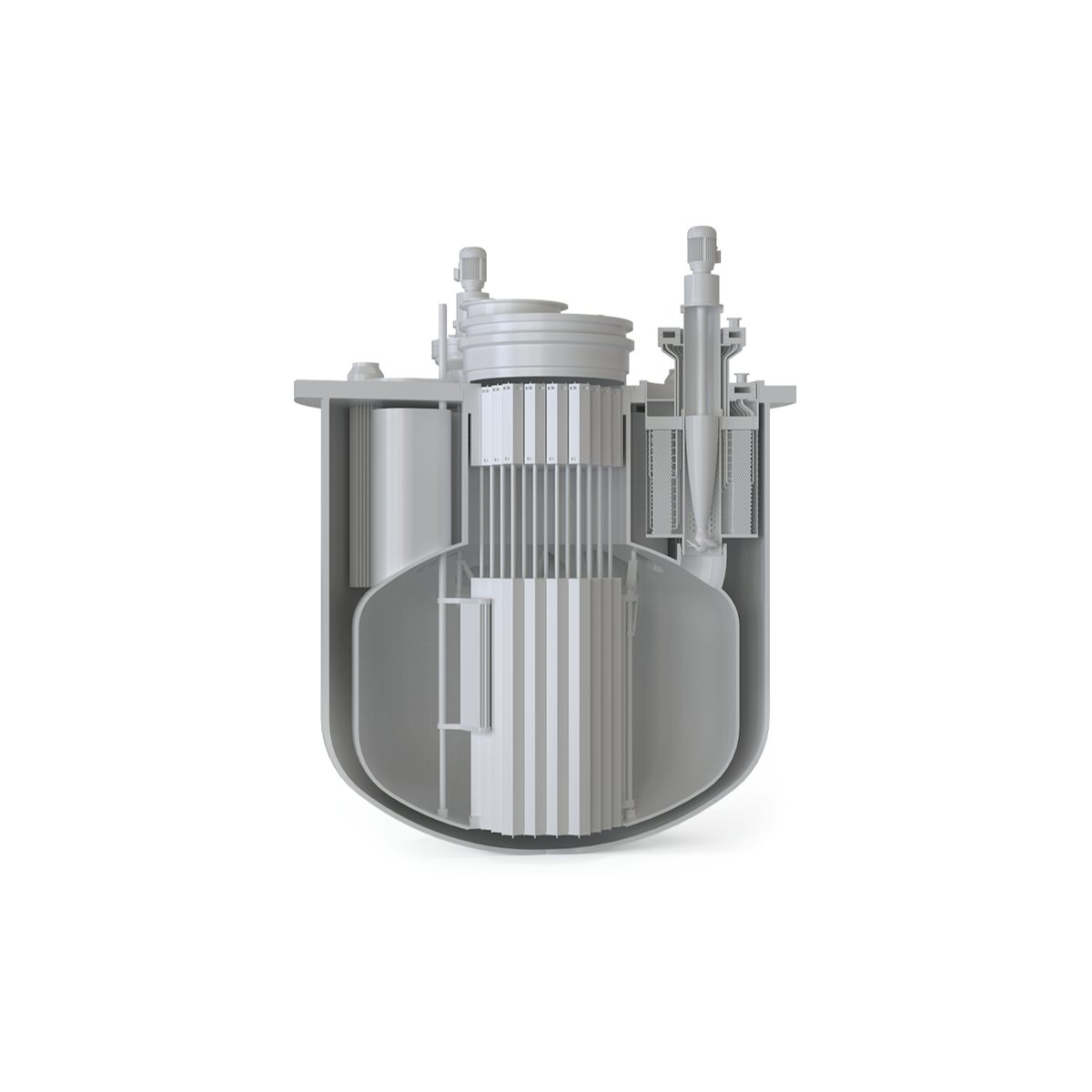 www.nucnet.org
www.nucnet.org
Italian multinational Saipem and advanced reactor developer Newcleo have signed an agreement to explore the possible offshore applications of Newcleo’s technology. Newcleo is developing a lead-cooled fast neutron demonstration nuclear technology which according to earlier reports, will be suitable for a wide range of locations due to its unique intrinsic safety and compact characteristics. The company said in a statement that the goal of the agreement is to study the potential for utilising modular LFRs to provide electricity and hear for old and gas offshore installations. The statement said the agreement will also focus on extending the use of the LFR technology for electricity generation from floating nuclear units. Saipem specialises in engineering, drilling, and construction services for the energy and infrastructure sectors, particularly in the oil and gas industry. According to the statement, exploring the potential of nuclear power is part of the company’s efforts to achieve its corporate net zero objectives by 2050. Newcleo, which is based in the UK and has offices in France, Italy and Switzerland, says it is aiming to deliver a first demonstration reactor by 2033. The company was founded by Italian physicist and alumnus of the European Organisation for Nuclear Research, Stefano Buono. The company has recently announced a number of partnerships and agreements related to the development of its reactor technology, including among others France’s Alternative Energies and Atomic Energy Commission (CEA), new-gen reactor developer Naarea, Italy’s Maire Tecnimont, and shipbuilder Fincantieri.
International Atomic Energy Agency Director General Rafael Mariano Grossi has inspected the cooling tower affected by fire last month at Zaporizhzhia Nuclear Power Plant and says it is "not usable in the future, so it will probably be demolished". Grossi, on his fifth visit to the six-unit nuclear plant which has been under Russian military control since early March 2022, said that the security situation remains "very fragile ... so our work continues ... we will be analysing, assessing what we saw today - until the conflict is over or it enters a phase where there is no more active military activity ... the possibility of something serious cannot be excluded". The IAEA has had a team of experts stationed at Zaporizhzhia for two years - with 23 rotations of staff during that time. Their presence is intended to boost nuclear safety and security at the plant which is on the front line of Russian and Ukrainian forces. Ukraine and Russia each blame the other side for putting nuclear safety and security at risk. After the fire at the cooling tower Russia accused Ukraine of causing it with drone attacks, while Ukraine accused Russia of causing it deliberately, or by negligence. Taking questions from reporters afterwards Grossi was asked about the IAEA not attributing blame to either side - it was an issue that Rosatom Director General Alexei Likhachev said he had raised - and Grossi explained that it was important for the agency to stick to facts and "not get dragged down into political discussions". He said they could provide the facts and details and analysts could draw their own conclusions. The visit to Zaporizhzhia took place on Wednesday and was followed on Thursday by a visit to the Chernobyl site. Grossi, posting on the X social media site, said the IAEA had delivered 550 beds "as part of our medical assistance to Ukrainian NPPs. Support will soon include ambulances and hospital refurbishments".
Swedish lead-cooled small modular reactor (SMR) technology developer Blykalla said it is participating in a new project focused on integrating SMRs with thermochemical processes to produce renewable materials, like bio-coal and bio-oil, which can then be used to reduce carbon emissions and enhance energy efficiency in Sweden's steel and chemical industries. The project is a collaborative effort between academia - RISE Research Institutes of Sweden (which is leading the project) and the KTH Royal Institute of Technology - and relevant industry actors steel producer SSAB, Blykalla and bio-coal producer Envigas. Funded by the Swedish Energy Agency, the project has received a substantial investment of over SEK10 million (USD967,000 million) and is set to start in December. Blykalla said the project focuses on leveraging the heat generated by SMRs to power thermochemical processes such as pyrolysis and hydrothermal carbonisation. The objective is to produce renewable materials that can replace fossil-based products in the steel and chemical industries, thus significantly reducing carbon emissions and enhancing energy efficiency. By coupling SMRs with these processes, the project aims to maximise resource efficiency and contribute to Sweden's ambitious target of becoming fossil-free by 2045. "This effort is expected to support the broader industrial transition to fossil-free processes, particularly in sectors that are traditionally heavy carbon emitters, like steel production," it added. "The results are anticipated to have far-reaching implications, providing a model for other countries and industries looking to reduce their carbon emissions and enhance energy efficiency." Blykalla - formerly called LeadCold - is a spin-off from KTH in Stockholm, where lead-cooled reactor systems have been under development since 1996. The company - founded in 2013 as a joint stock company - is developing the SEALER (Swedish Advanced Lead Reactor. A demonstration SEALER (SEALER-D) is planned to have a thermal output of 80 MW. As in future commercial reactors from Blykalla, the fuel rods will be cooled by 800 tonnes of liquid lead. The reactor will have a height and diameter of about 5 metres. Blykalla's goal is for its first 140 MWt SEALER-55 commercial reactor to be ready for operation by 2030.
The concrete foundation of the turbine building for Akkuyu unit 3 in Turkey includes a steel reinforcement frame which measures 58.2 metres by 20.4 metres by 5.3 metres. In total more than 307 tonnes of reinforcement steel was included in the foundation - the steel rods used in the frame varied with diameters up to 36 millimetres. In total 2220 cubic metres of high-strength self-compacting concrete were used. Sergei Butсkikh, CEO of Akkuyu Nuclear, said: "The design maturing period will be 56 days. During this time there will be monitoring and steam curing, especially important to ensure high quality of the massive foundation structure." The foundation is designed to withstand and evenly distribute heavy loads generated during turbine operation. Once it has reached its design strength full-scale work on installing the turbine generator plant will begin. The background Akkuyu, in the southern Mersin province, is Turkey's first nuclear power plant. Rosatom is building four VVER-1200 reactors, under a so-called BOO (build-own-operate) model. According to the terms of the 2010 Intergovernmental Agreement between the Russian Federation and the Republic of Turkey, the commissioning of the first power unit of the nuclear power plant must take place within seven years from receipt of all permits for the construction of the unit. The licence for the construction of the first unit was issued in 2018, with construction work beginning that year. Nuclear fuel was delivered to the site in April 2023. Turkey's Nuclear Regulatory Agency issued permission for the first unit to be commissioned in December, and in February it was announced that the reactor compartment had been prepared for controlled assembly of the reactor - and the generator stator had also been installed in its pre-design position. The aim is for unit 1 to begin supplying Turkey's energy system in 2025. When the 4800 MWe plant is completed it is expected to meet about 10% of Turkey's electricity needs, with the aim that all four units will be operational by the end of 2028.
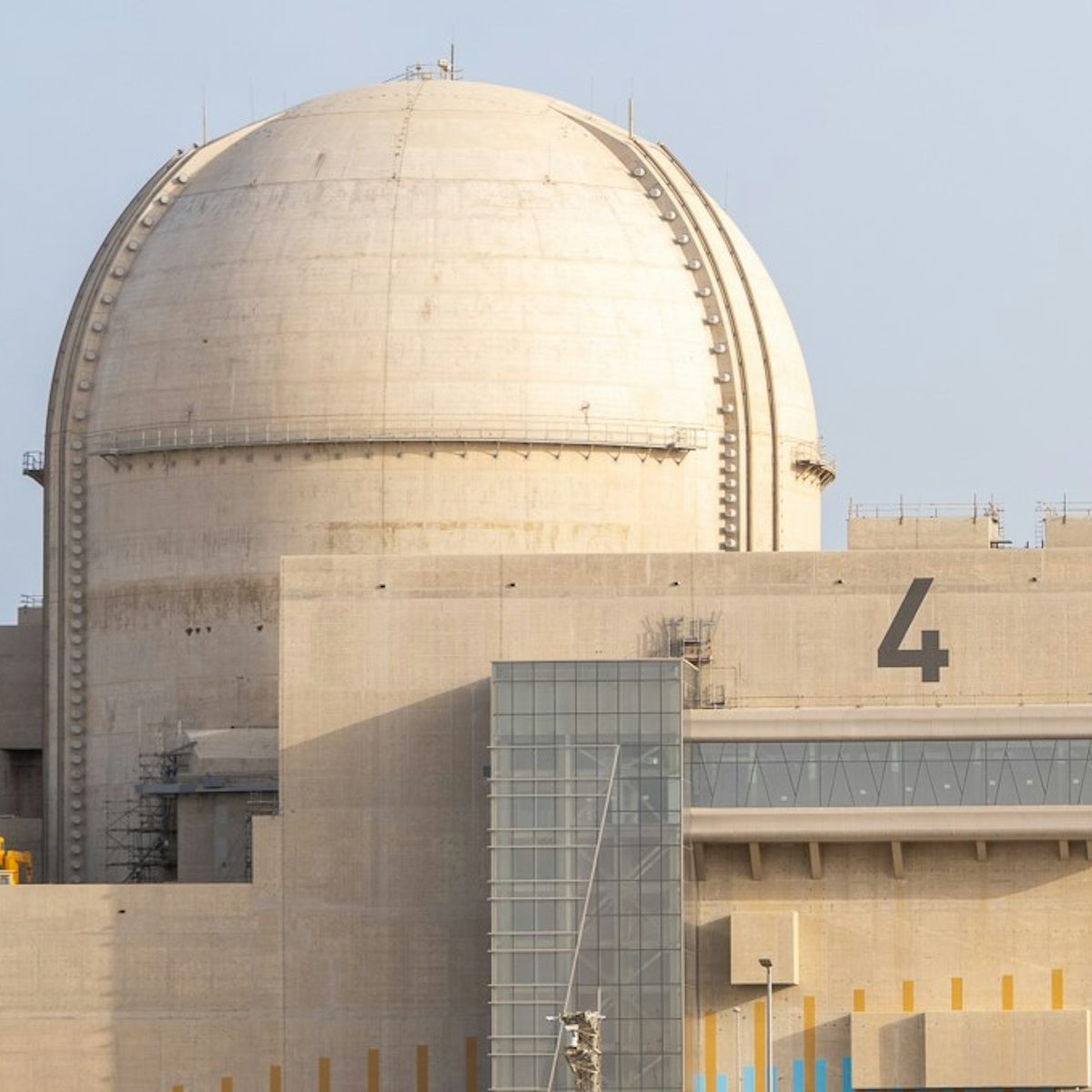 www.nucnet.org
www.nucnet.org
The fourth and final unit at the Barakah nuclear power station in the United Arab Emirates has begun commercial operation, marking full delivery of a project that will generate 25% of the kingdom’s electricity needs, Emirates Nuclear Energy Corporation said on Thursday (5 September). Enec, which is responsible for the deployment and ownership of nuclear energy plants in the UAE, said the “historic milestone” of full operation for all four units at the station means Barakah is now generating 40 TWh of electricity per year, nearly the equivalent of the annual electricity consumption of New Zealand. “This clean and carbon-free energy is enough to power 16 million EVs annually,” Enec said. “This represents the largest decarbonisation effort in the UAE and the region, positioning the country ahead of its 2030 climate commitments.” Construction of Barakah, the first commercial nuclear power station to operate in the Arab World, began in 2012. The first of its four South Korea-supplied APR1400 plants began commercial operation in 2021. Enec managing director and chief executive officer Mohamed Al Hammadi said Barakah, on the Persian Gulf coast west of the city of Abu Dhabi, offers “a new model for the world” and demonstrates that nuclear energy is bankable and can be delivered efficiently. He said the units came online within eight years from first concrete pour to fuel load and achieved a 40% improvement in schedule from start of operational readiness to commercial operations for Unit 4 compared to Unit 1. Speaking at the World Nuclear Symposium in London on Thursday, Al Hammadi said growth in energy demand is “serious” and the nuclear industry has two options: do nothing and continue as a small industry, or “if we act and tap into this demand, we can create change”. ‘Significant Step’ Towards Net Zero UAE president Mohammed bin Zayed Al Nahyan said on social media on Thursday: “With the start of operations at Unit 4 of the Barakah Nuclear Energy Plant, the UAE has taken another significant step on the journey towards net zero. The UAE has said it wants to use nuclear power as the main source for generating non-hydrocarbon-based electricity. Most of the energy produced in the UAE is from natural gas and oil. The country is also a major exporter of oil and gas with natural gas accounting for 63% of total energy supply in 2021, according to the International Energy Agency. Unconfirmed press reports earlier this year said the UAE was planning to launch a tender for the construction of a new nuclear power plant station that would double the number of the Gulf state’s commercial nuclear power reactors. Enec has said that the success of the Barakah nuclear power station project has equipped the UAE with the expertise it needs to consider expanding its nuclear programme into areas including small modular reactors and clean hydrogen production. Al Hammadi told the 2022 World Government Summit in Dubai that the “sky is the limit” for the UAE’s nuclear energy industry with the country engaged in discussions related to “futuristic reactors” including SMRs and considering the use of clean hydrogen generated by reactors.